fall inside a hole
Playrail Chug-A-Log Choo Choo (1975)
Originally written November 12, 2023Updated September 4, 2024
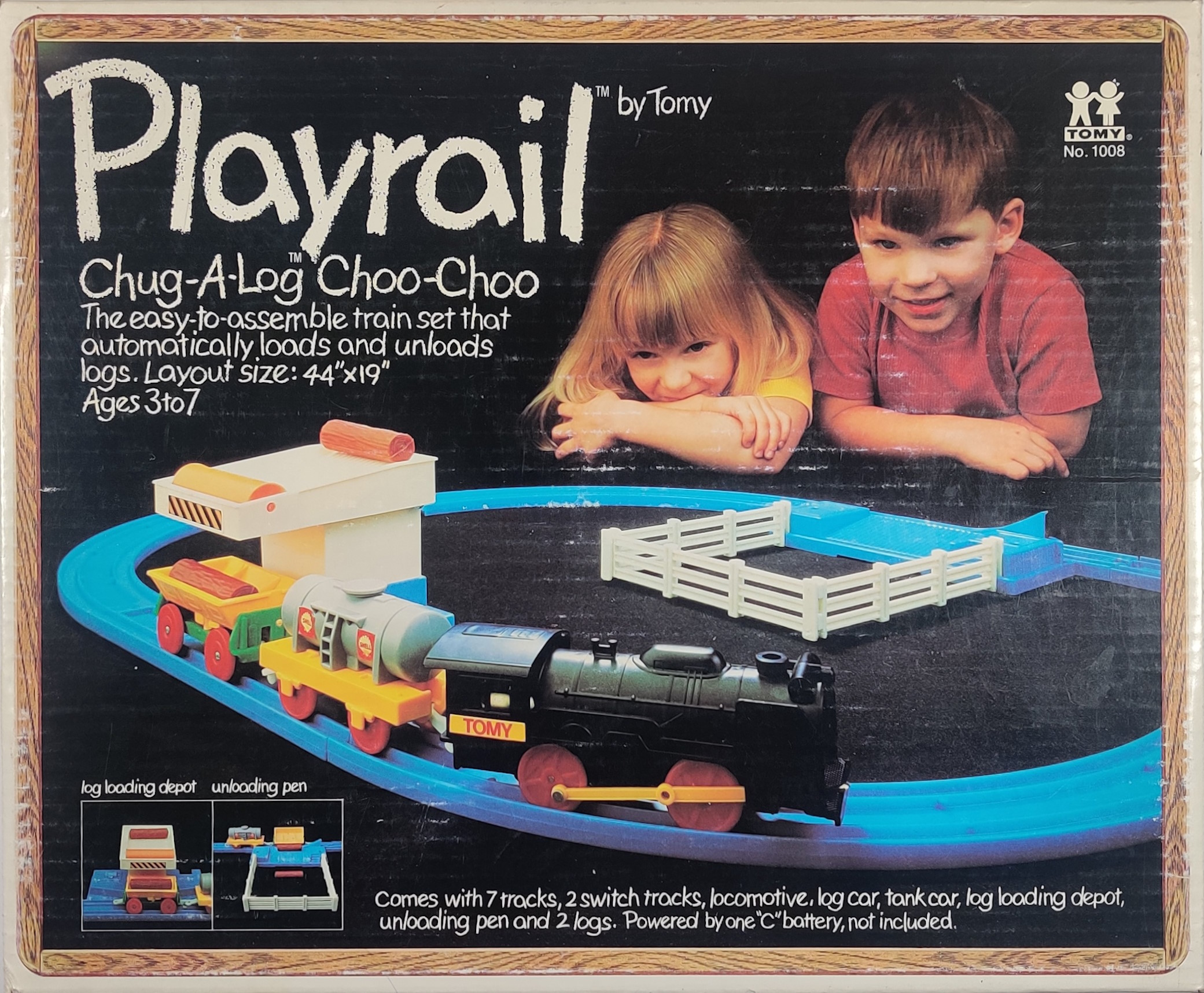
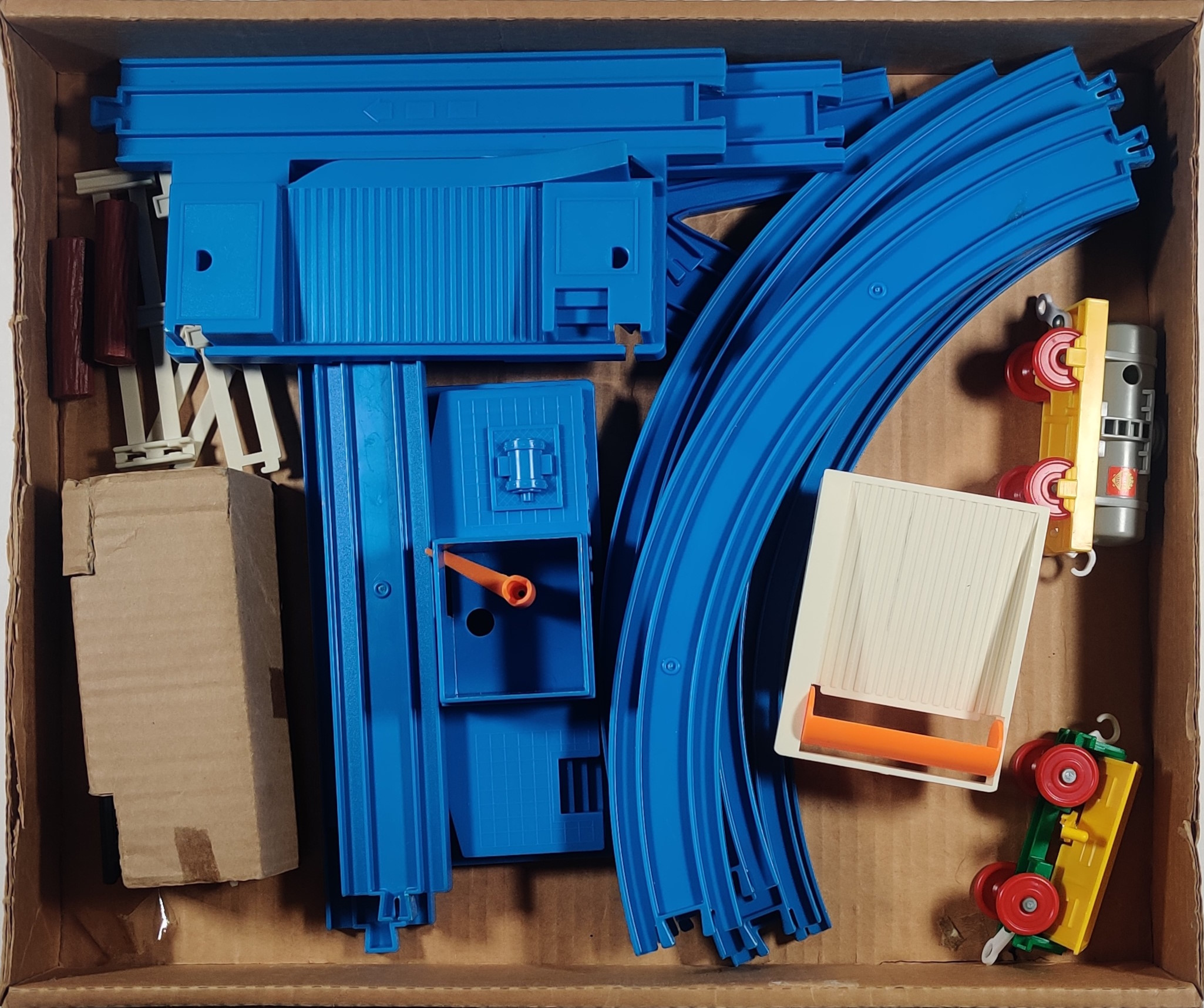
The Playrail Chug-A-Log Choo-Choo was seemingly the first of the "Playrail" series of sets and, based on trademark filings, was released sometime in early to mid 1975 by Tomy Corp, Tomy's first American venture. The name incorporates some American train onomatopoeia, playing on the phrase chug-a-lug. Unlike later Playrail sets, the Chug-A-Log Choo Choo set was not based on an existing Plarail set nor a Plarail Land set, although it contains pieces used in regular Plarail sets. The set features the period log-loading station gimmick pieces and a D51, log car, and tank car. Like some other Plarail export sets from the 1970s, the track layout is not actually what is in the box, although in this case the contents are actually probably more impressive than the box implies.


I have come across two boxed copies of this set, both in separate auction lots with several other Playrail or Tomy toys, as well as the locomotive from a third set. This is certainly the least common Playrail set, most of the rest of which are still readily available online in varying states of completeness at any given time, while this set seems to appear only once every few years. I had previously learned of the set's existence from this blog page, which is also basically the only other place I have seen a copy of this set online at all.


Interestingly, the right side of the box mentions that a few of the components were produced in the United States. Tomy Corp. of America mostly imported and distributed toys produced in Japan, Taiwan, Singapore, and Tomy's other overseas factories but they did produce some components to some of their toys and games in the United States, mostly in the 1970s.
Set contents|
Quantity |
Item |
Photo |
|---|---|---|
| 3 pieces | "Tomy" D51 with log car and Shell tanker |
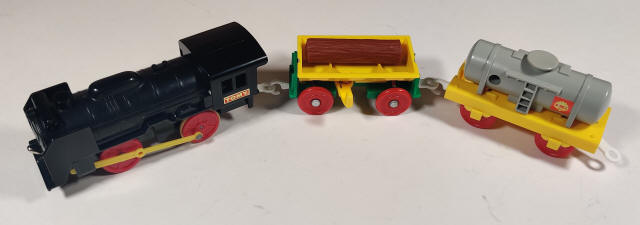 |
| 5 | 90 Degree Curve Rail (USA production, hard plastic) |
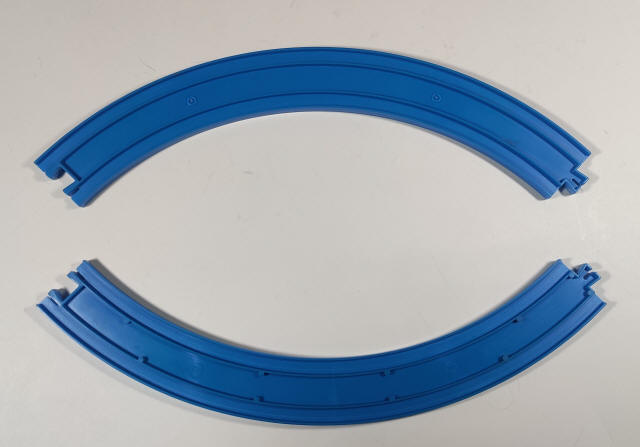 |
| 2 | Straight Rail (USA production, hard plastic) |
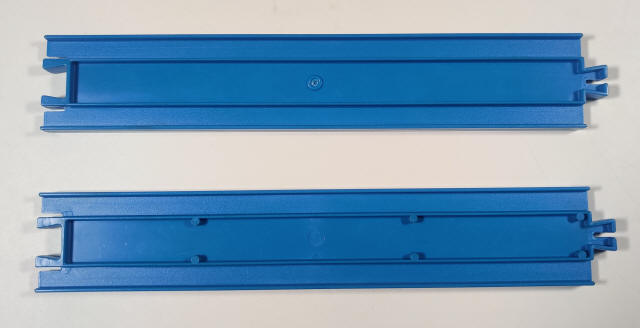 |
| 2 pieces | Turnout Rail (one pair, odd plastic mix) |
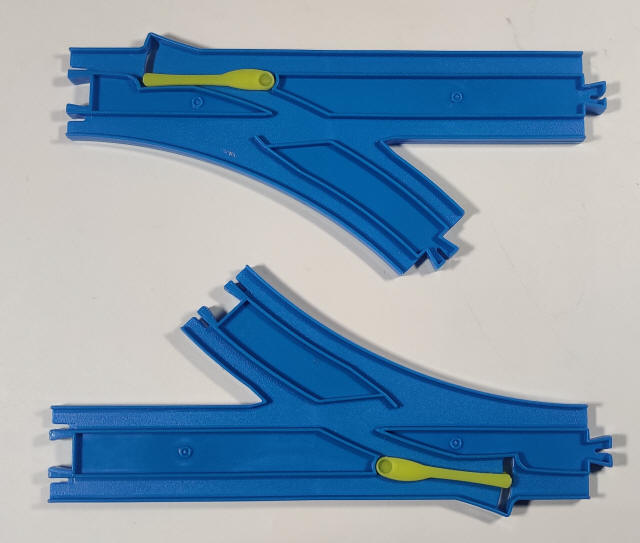 |
| 2 pieces | Log loader |
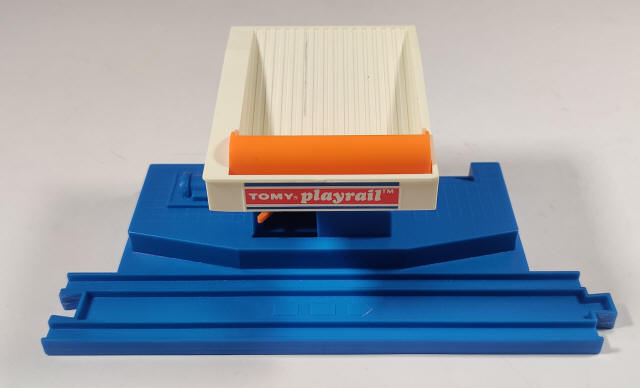 |
| 4 pieces | Log unloader and corral |
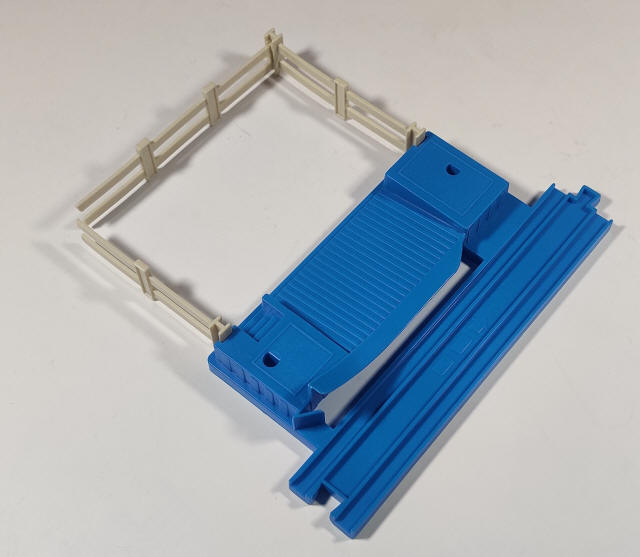 |
| 2 | Logs |
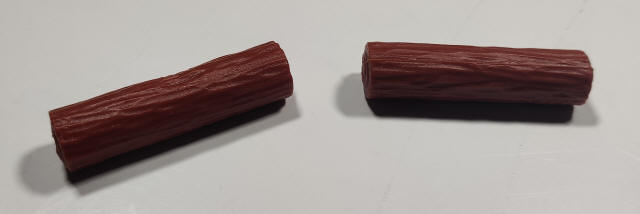 |
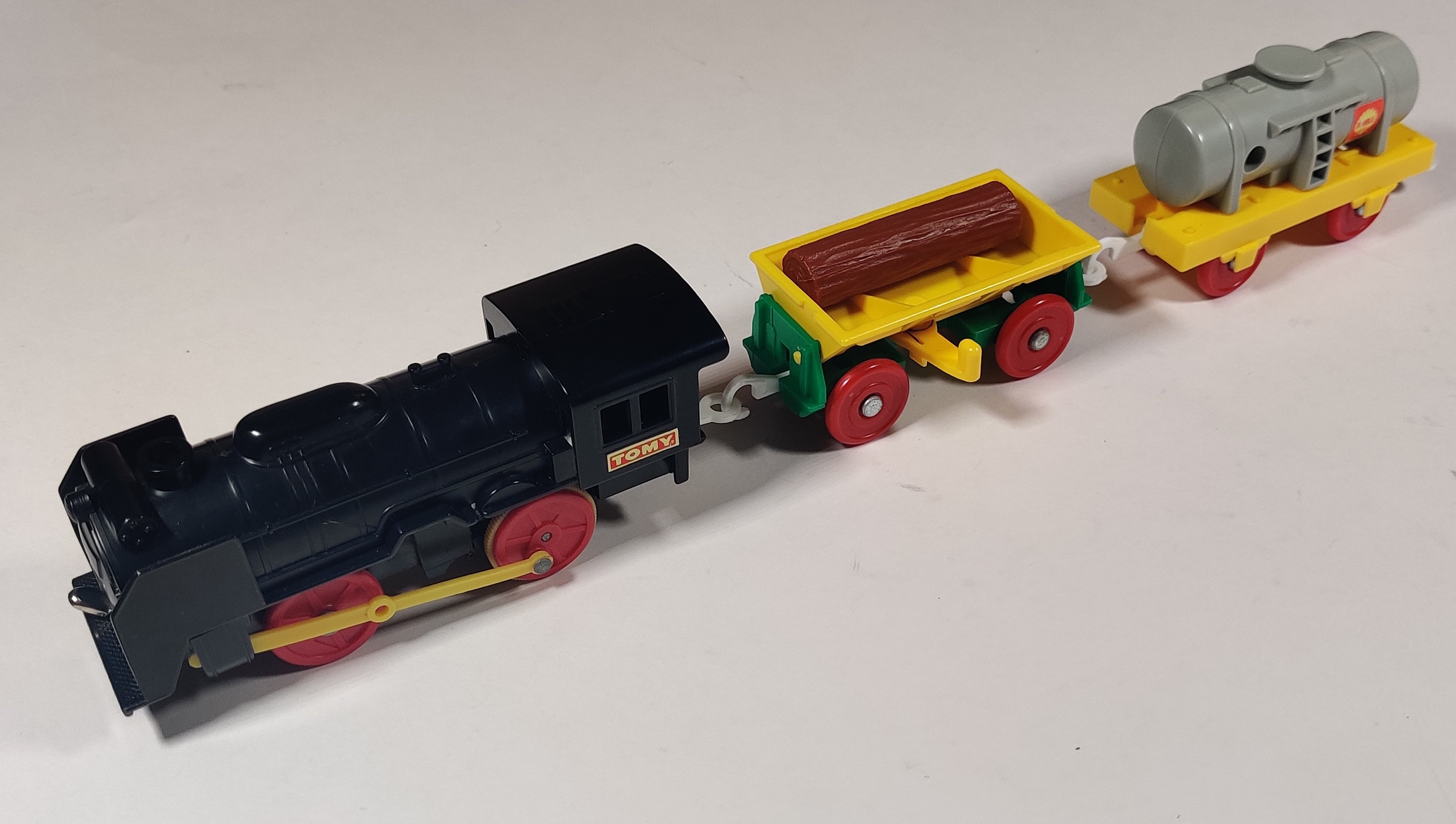
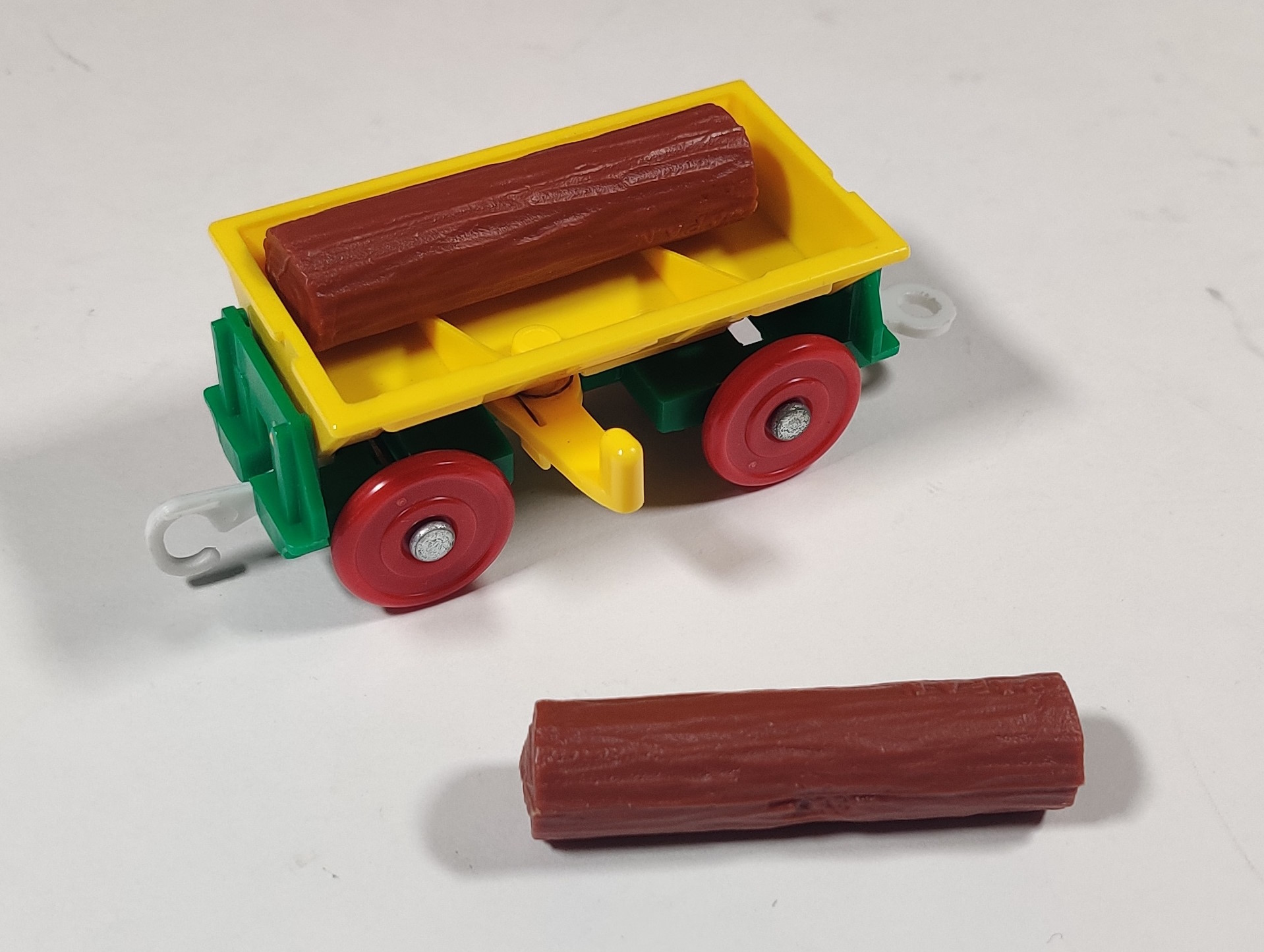

The D51 in this set pulls a period Shell tanker and the log car matching the Plarail log loader and depot. The D51 is of period construction with metal crank pins and an all-metal old power gearbox with clicking "chuffer." Instead of a D51 sticker on the cab, a red and yellow TOMY sticker is affixed. This sticker is longer than the original D51 sticker and overhangs the molded frame intended to border it. There is no sticker on the smokebox. When I bought my first copy of the set, the chassis for the D51 was in three pieces and had already been glued together once at some point in the past. The rubber components on both sets also needed replacing, including the traction tires on the early wheels which are thinner than later examples.
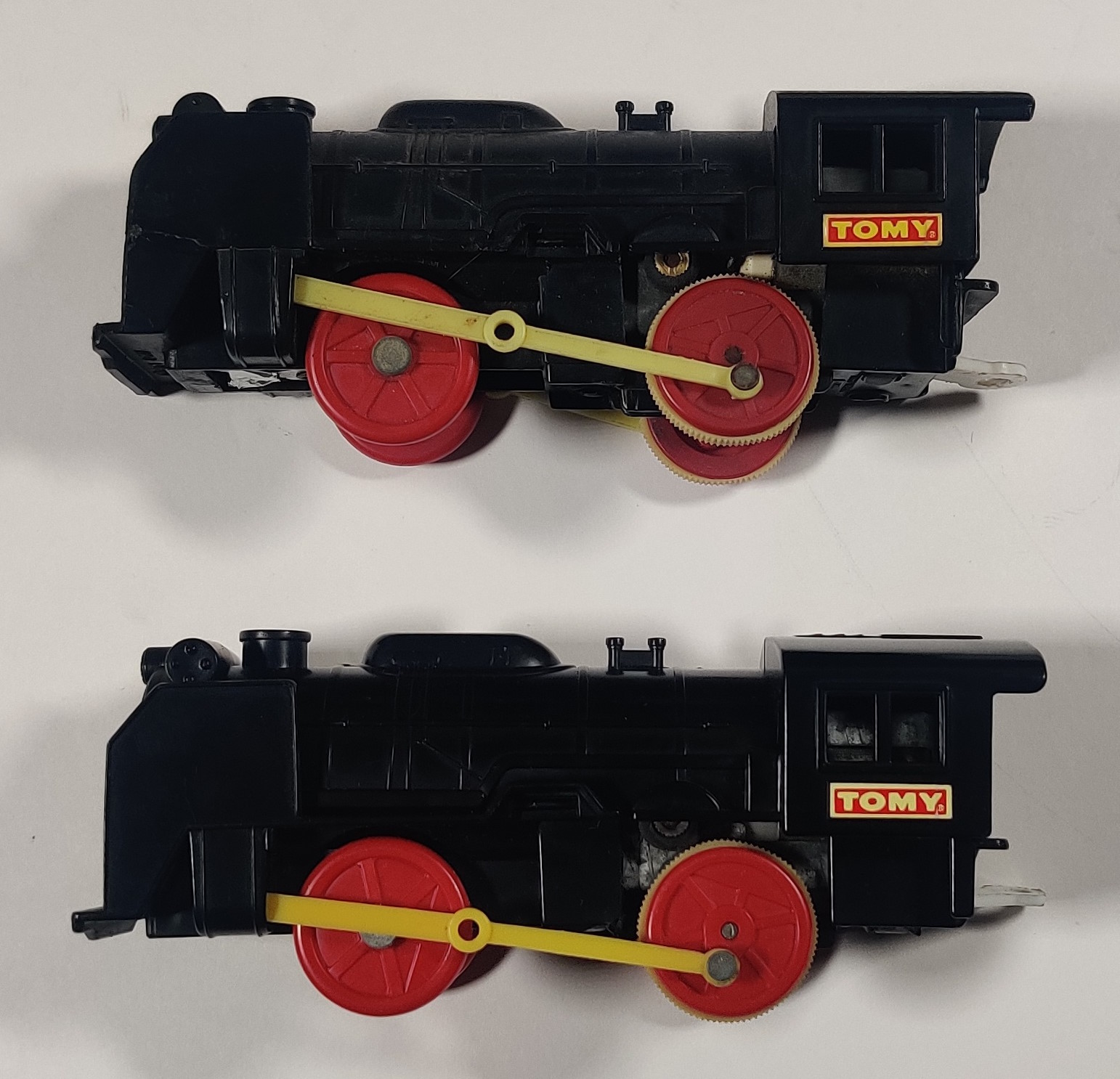
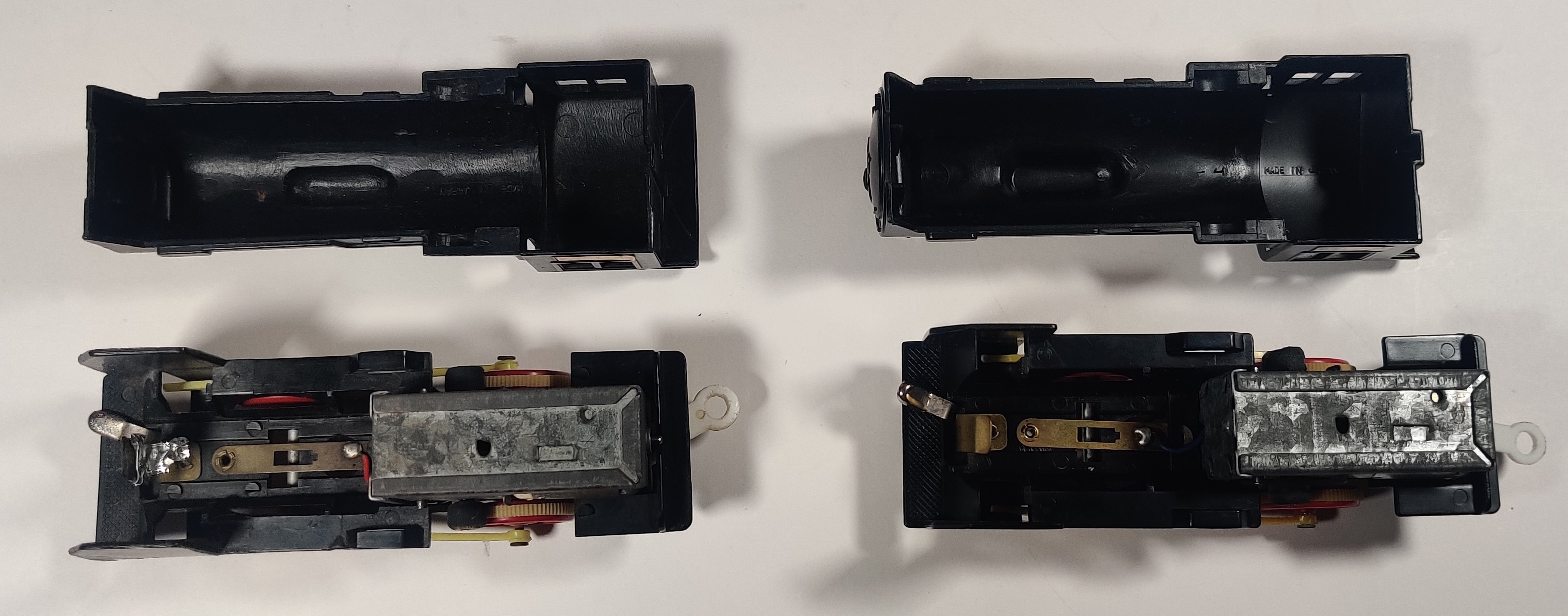
Before I found my first copy of the set, I bought an individual "TOMY" D51 in April 2021. This was the first time I had seen any components from this set for sale since starting to look for it. The front power switch is loose and I used some tin foil as a "temporary fix" to aid in its proper operation, as well as replacing part of the deteriorating power switch mechanism. The individual D51 seems to be of an older make. It uses the lighter more "milky" plastic siderods as well as the rougher rear coupler. The body shells for the D51s have their Made in Japan text and molding slot number marked on flipped and mirrored parts of the body shell.
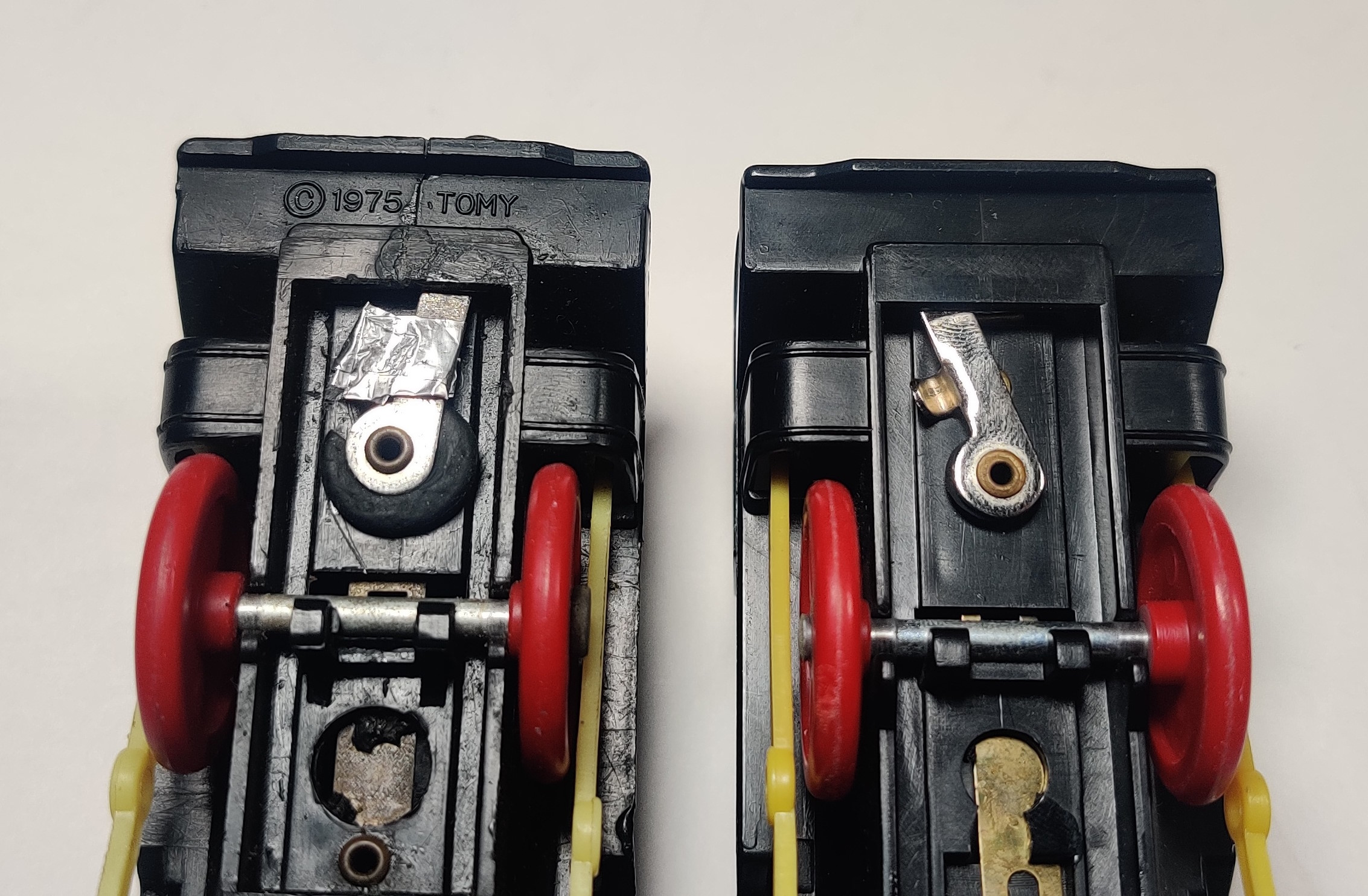
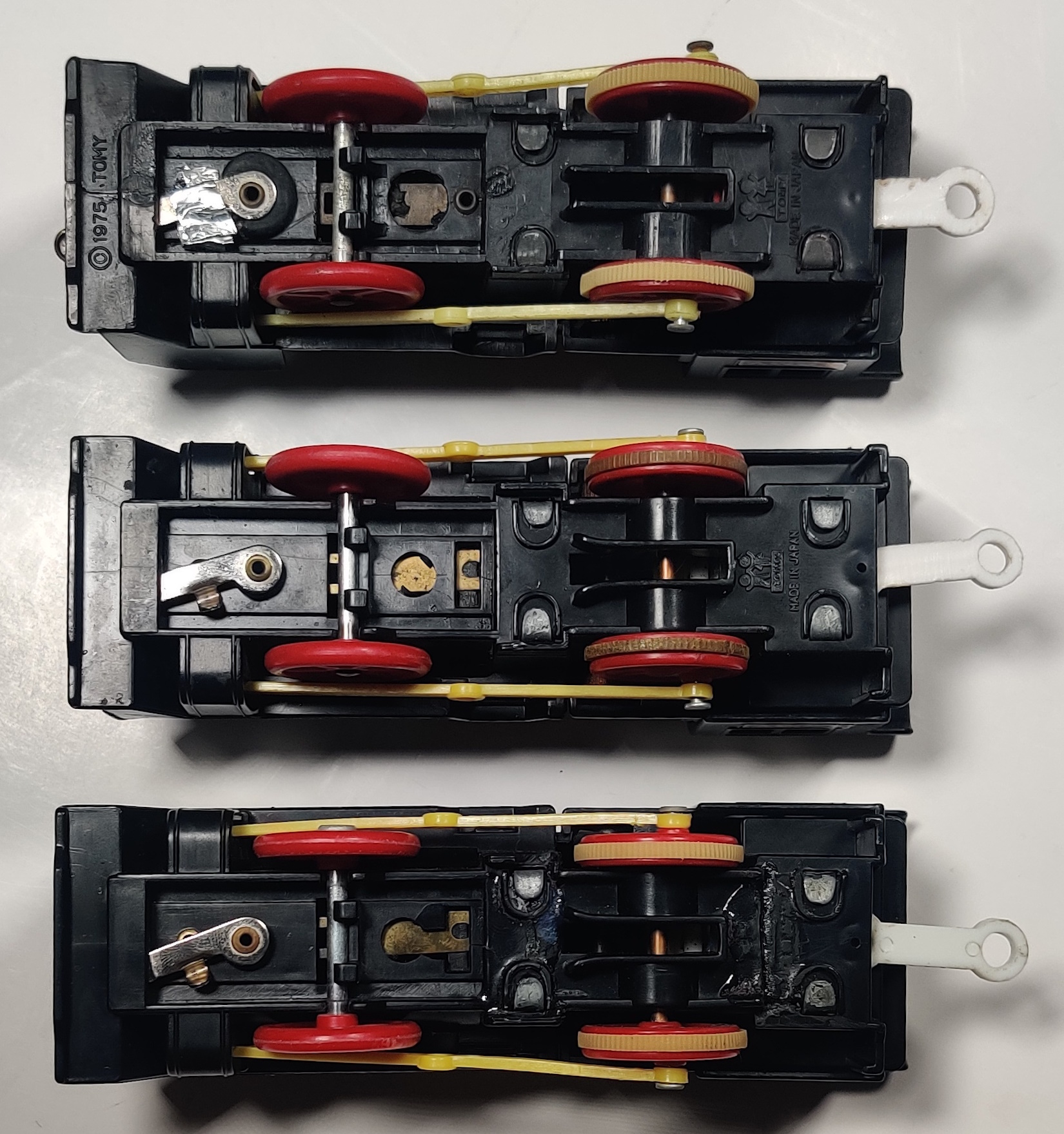
The molding is actually dated 1975 at the front, while the presumably later one is not. The earlier molding also seems to be somewhat rougher in general. My guess is that early on Tomy was using an early 1970s D51 tooling to produce engines for this set and added the 1975 date marking to the molding but eventually moved over to using a newer tooling on the fresher D51.
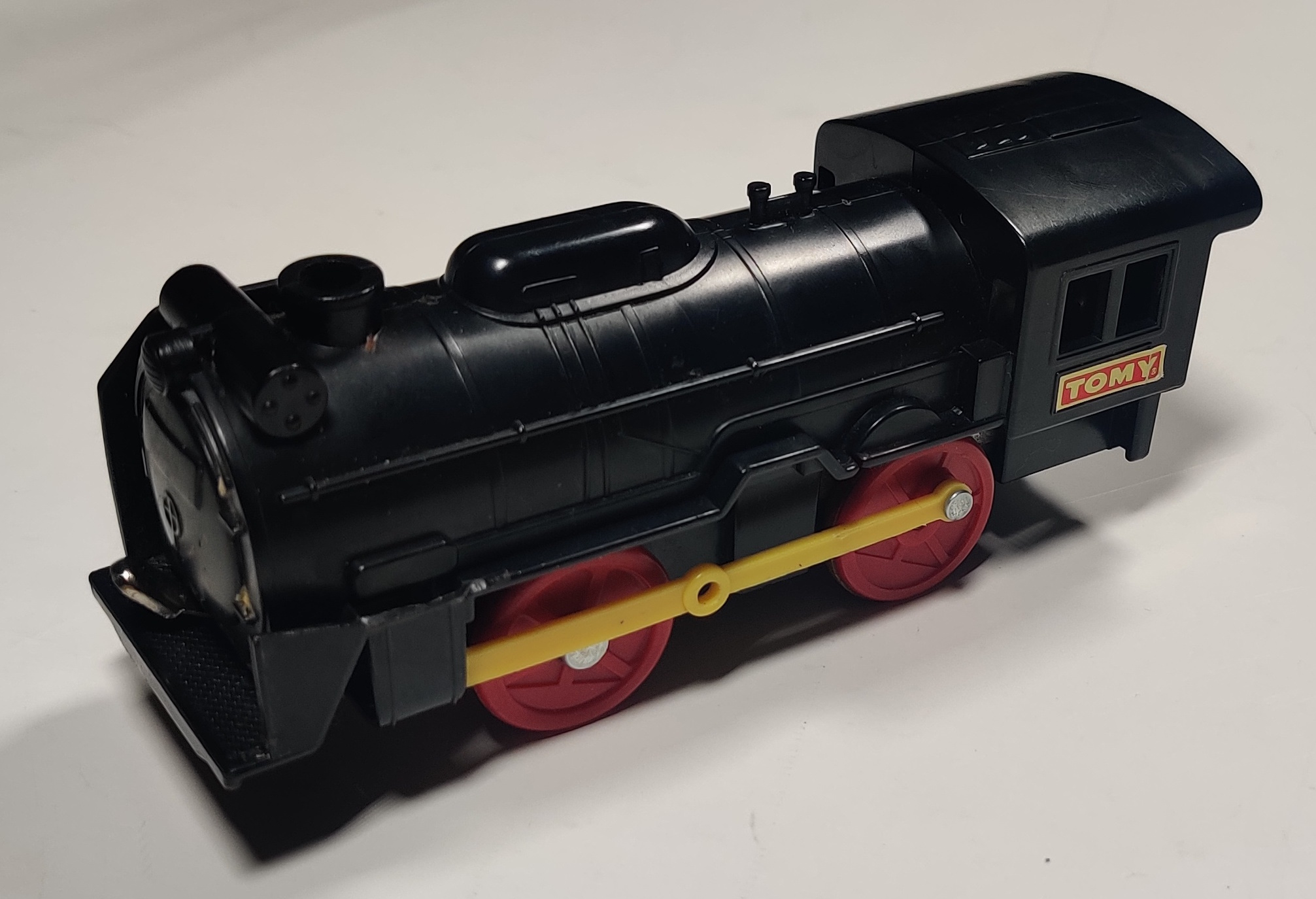
The second copy of the set that I acquired in August 2024 has the later style of tooling One of the smoke deflectors is cracked, but the chassis is not split like the other later example.
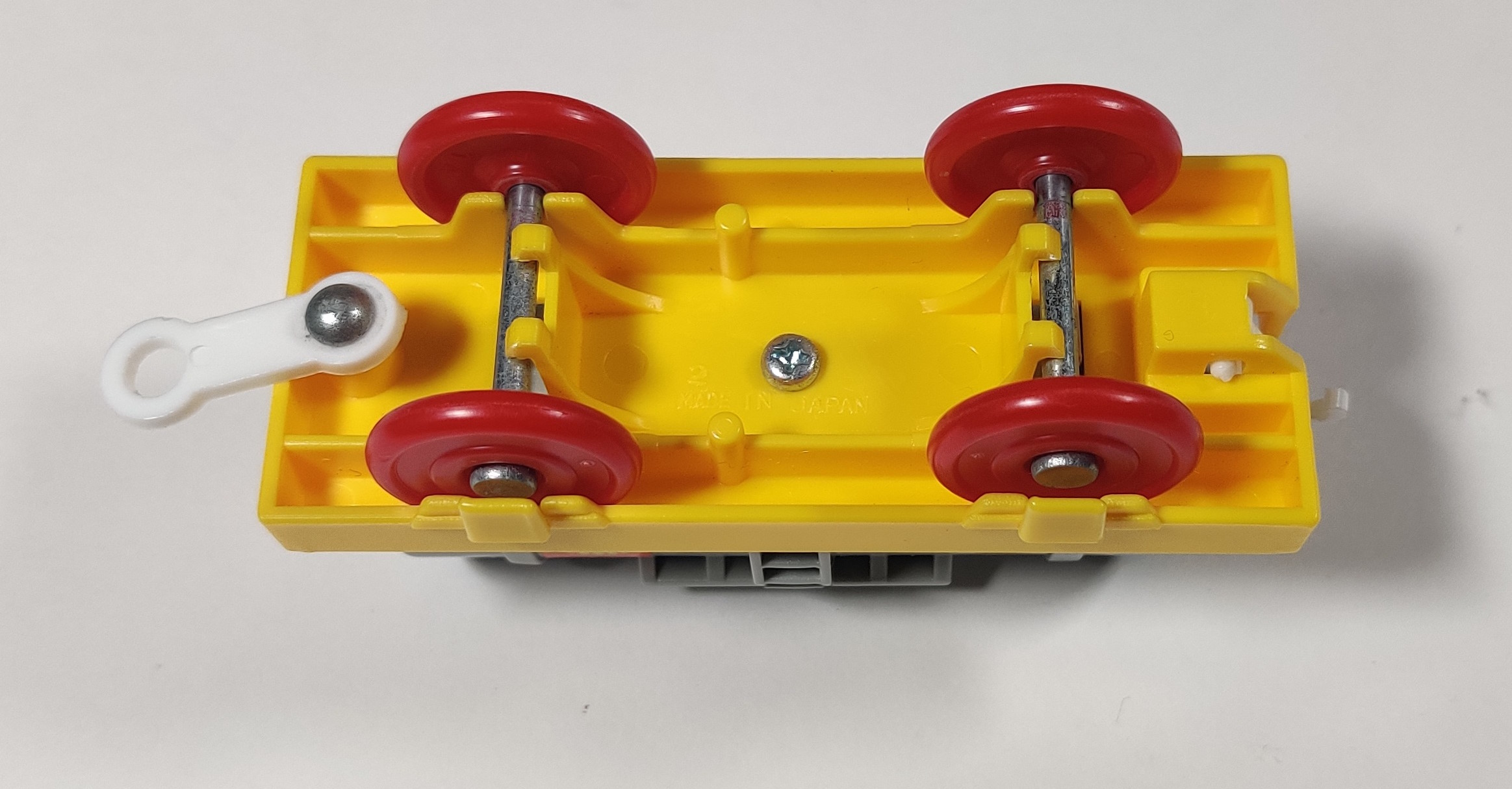
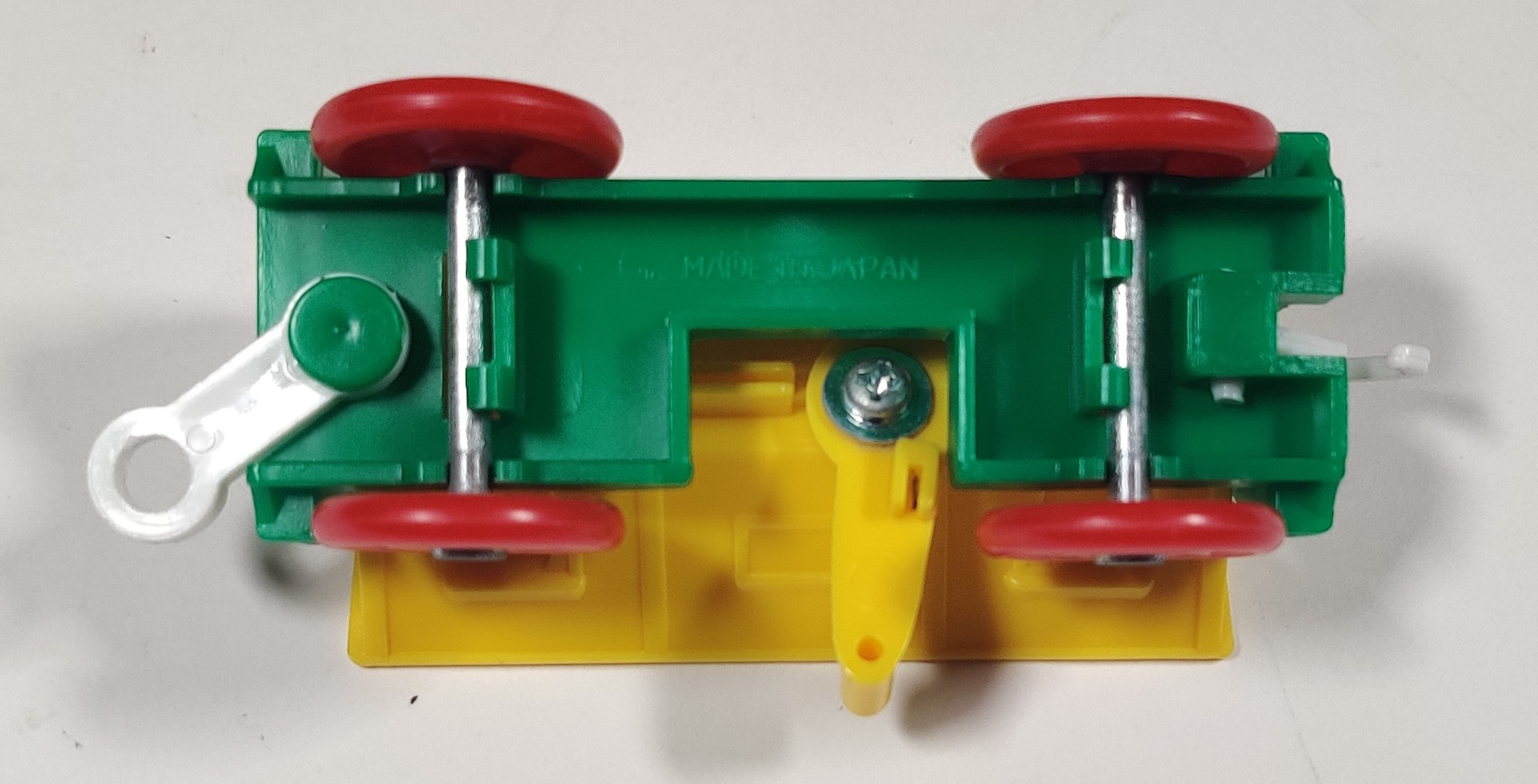
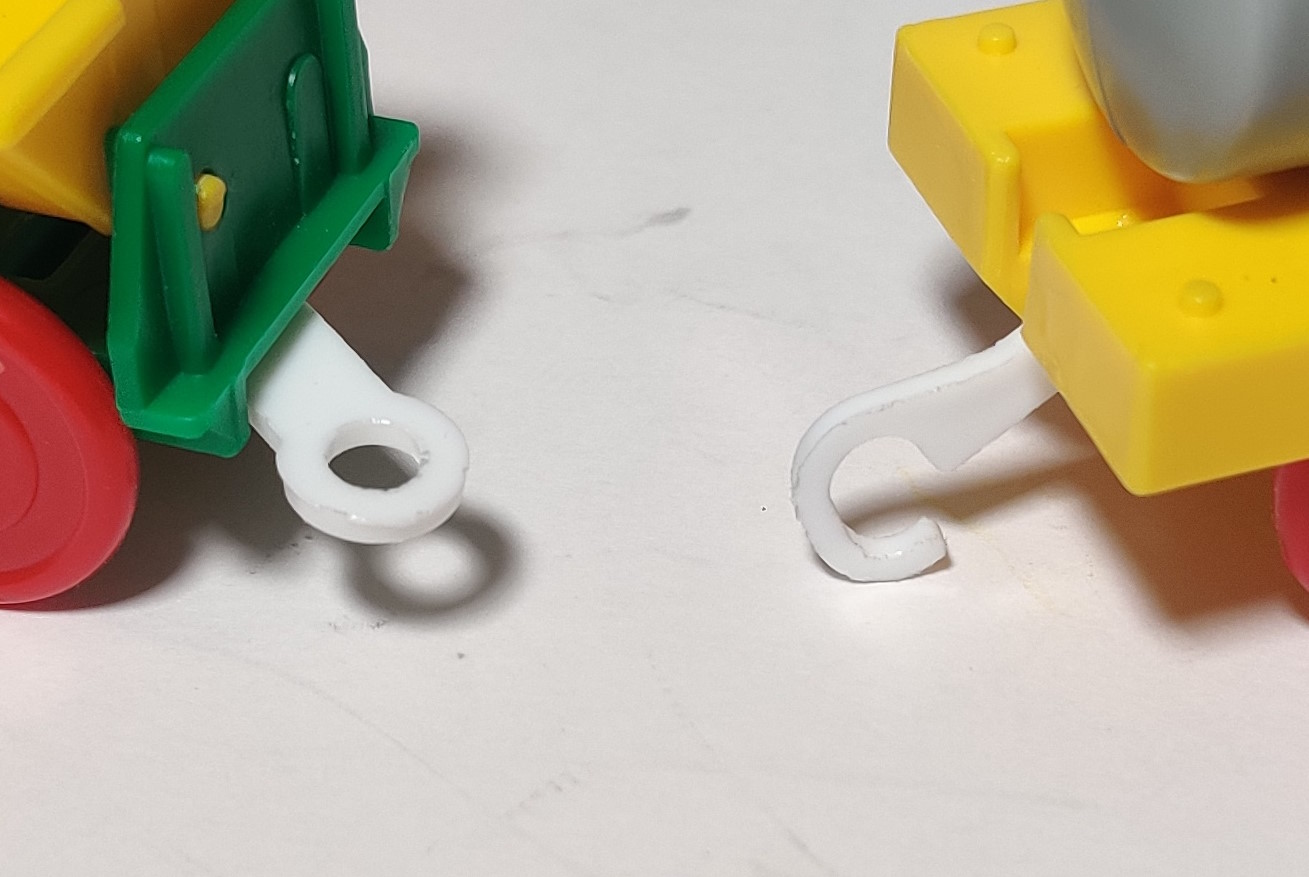
The freight cars are 1970s moldings with more fragile axle holders and an older, chunkier style of coupling. A few years later the almost-modern style was introduced and in the late 1970s the wheel holders were changed to a much more robust insert piece.
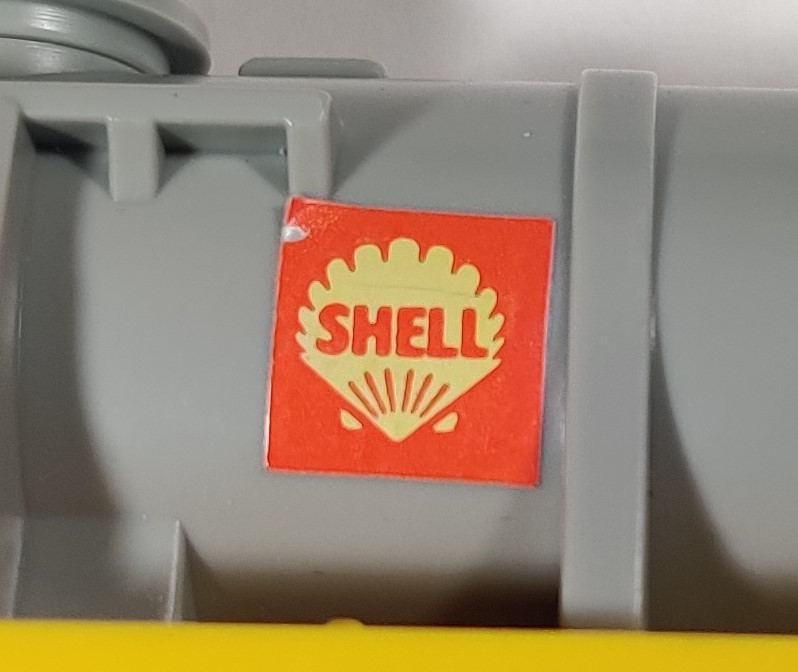
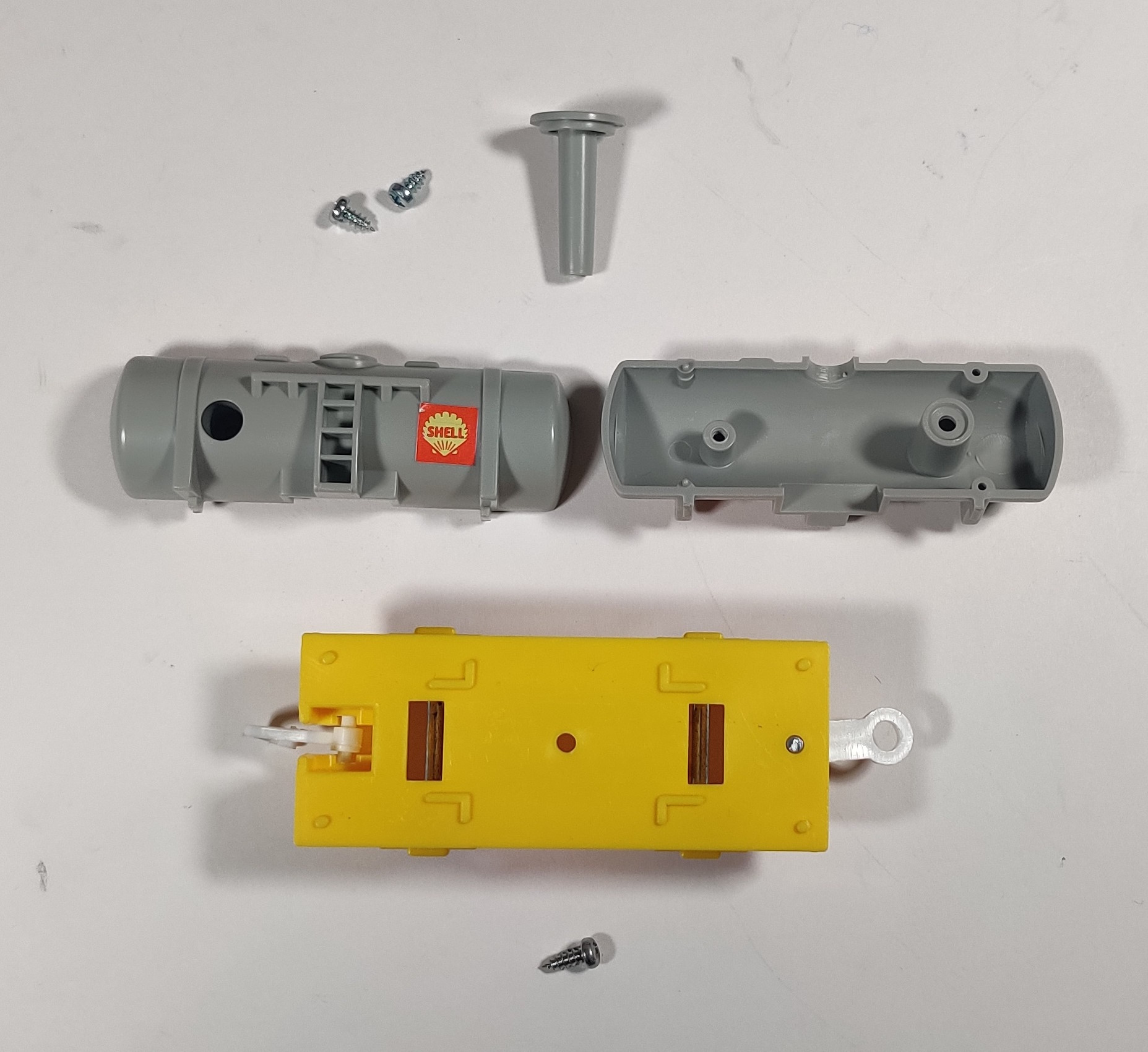
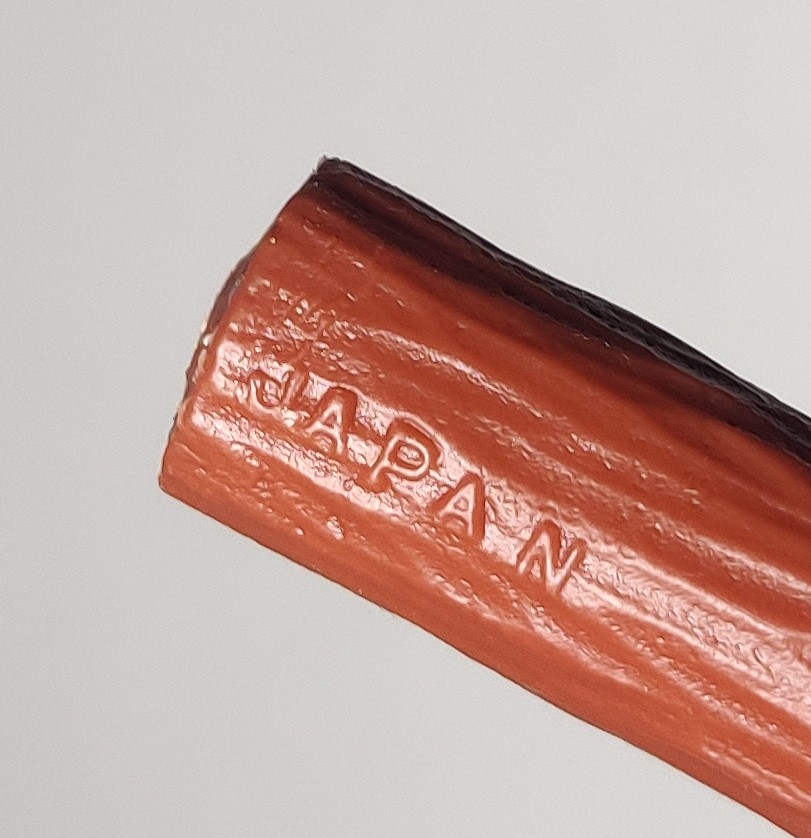
Although the picture on the box actually shows two Shell stickers on the side of the tanker, the ones I have only have one per side. Unlike the Plarail version of this tanker where the stickers are used to cover the screwholes, this tanker can be taken apart without disturbing the stickers as they are left uncovered. Chassis and logs are marked Japan.
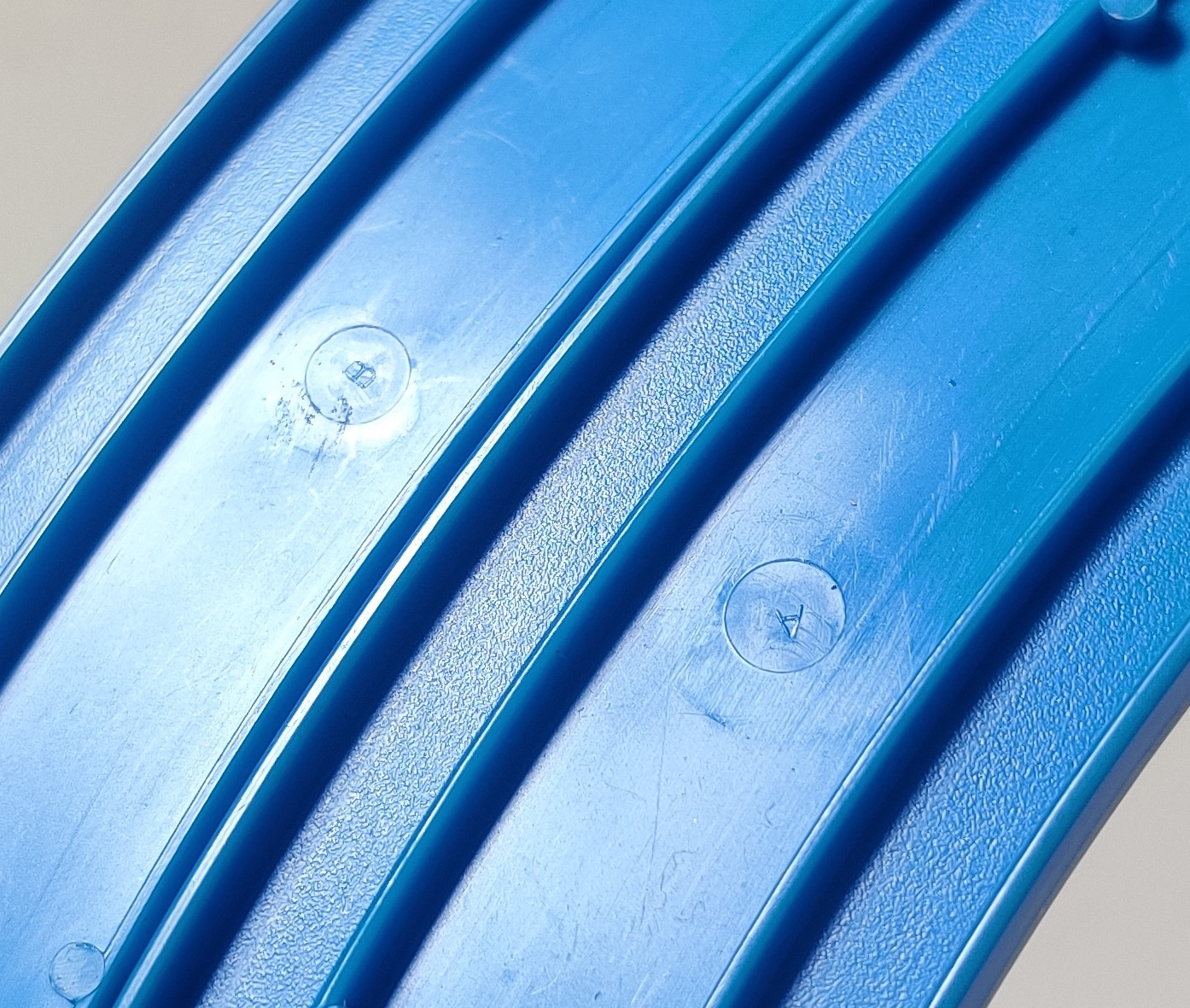
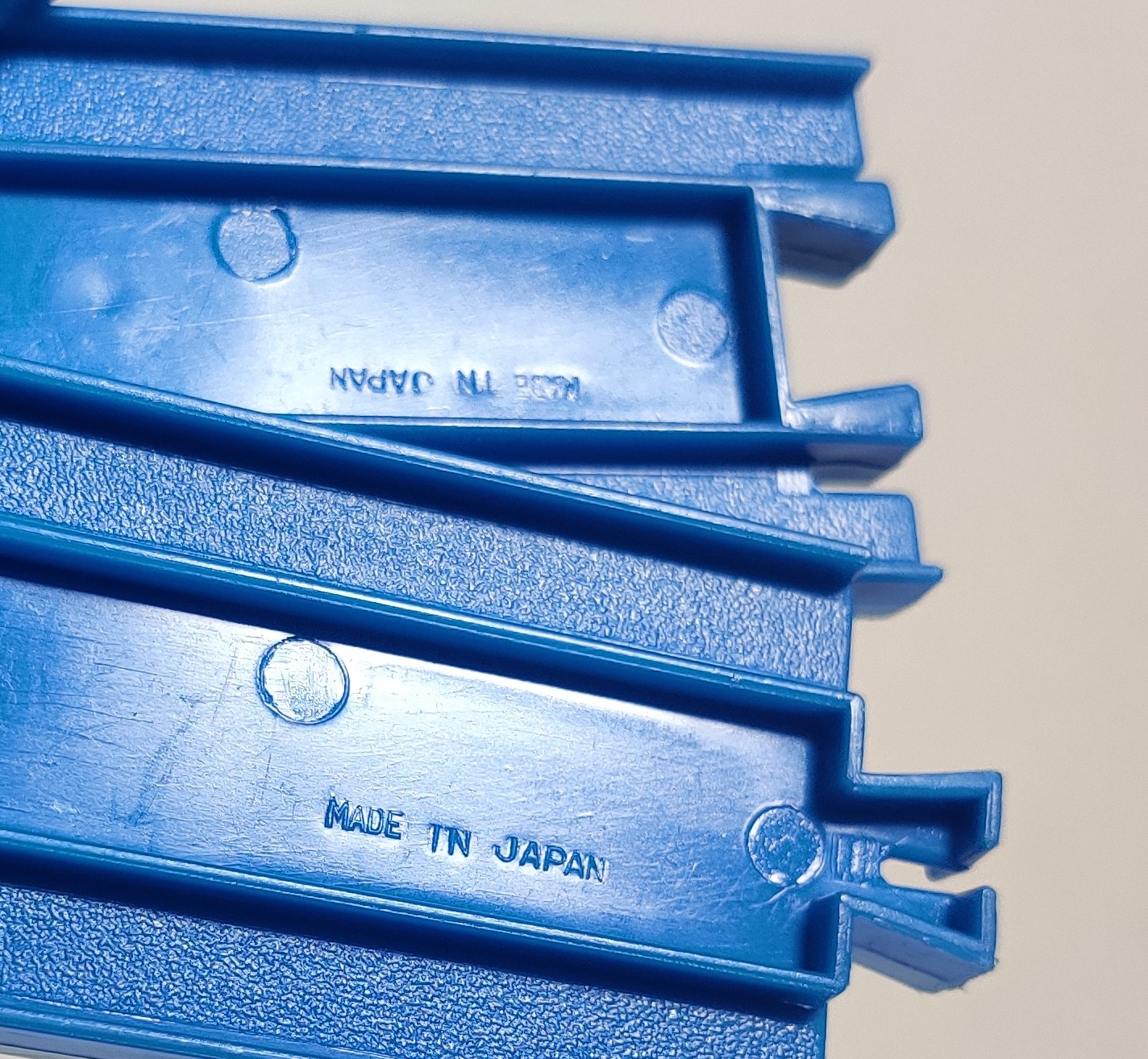
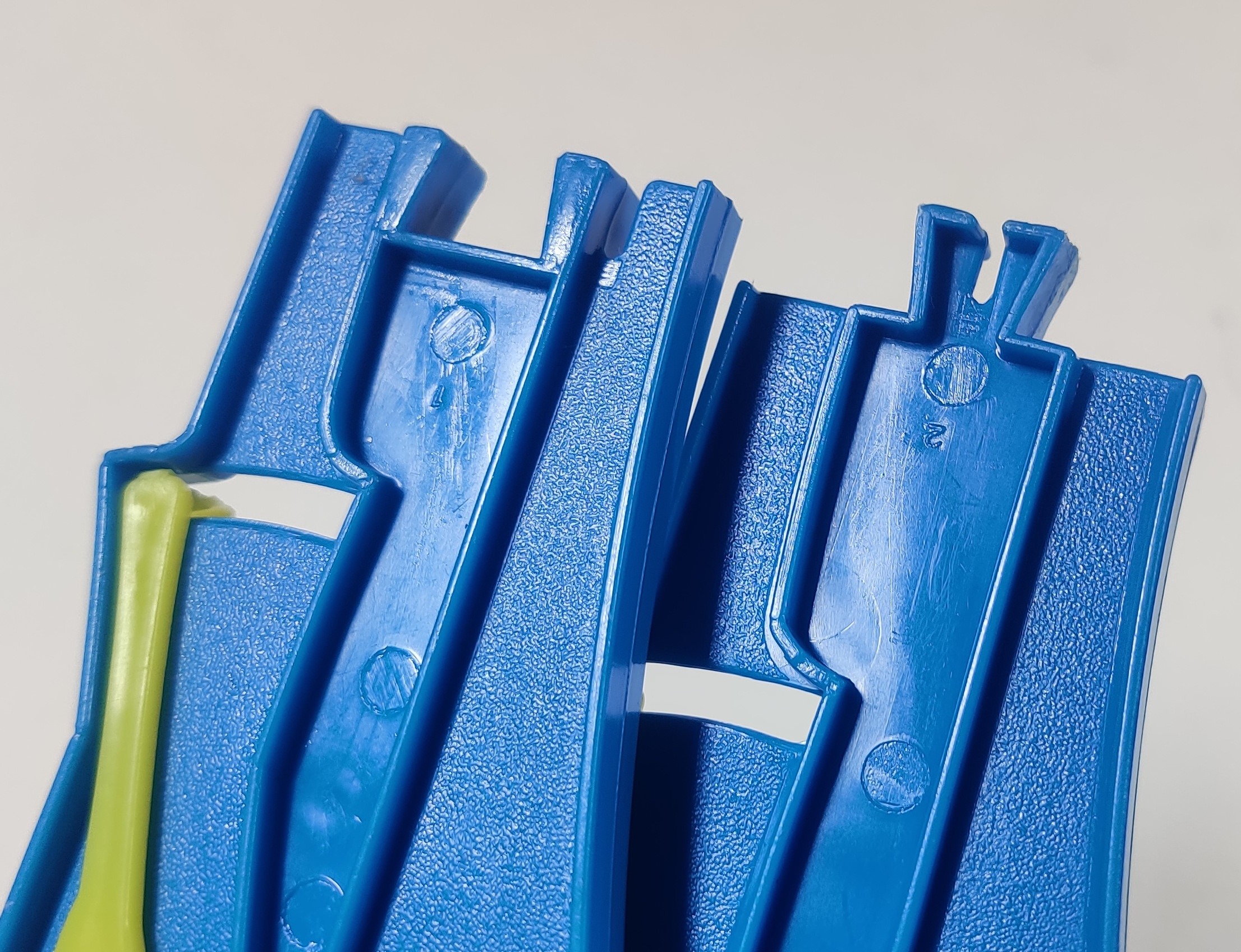
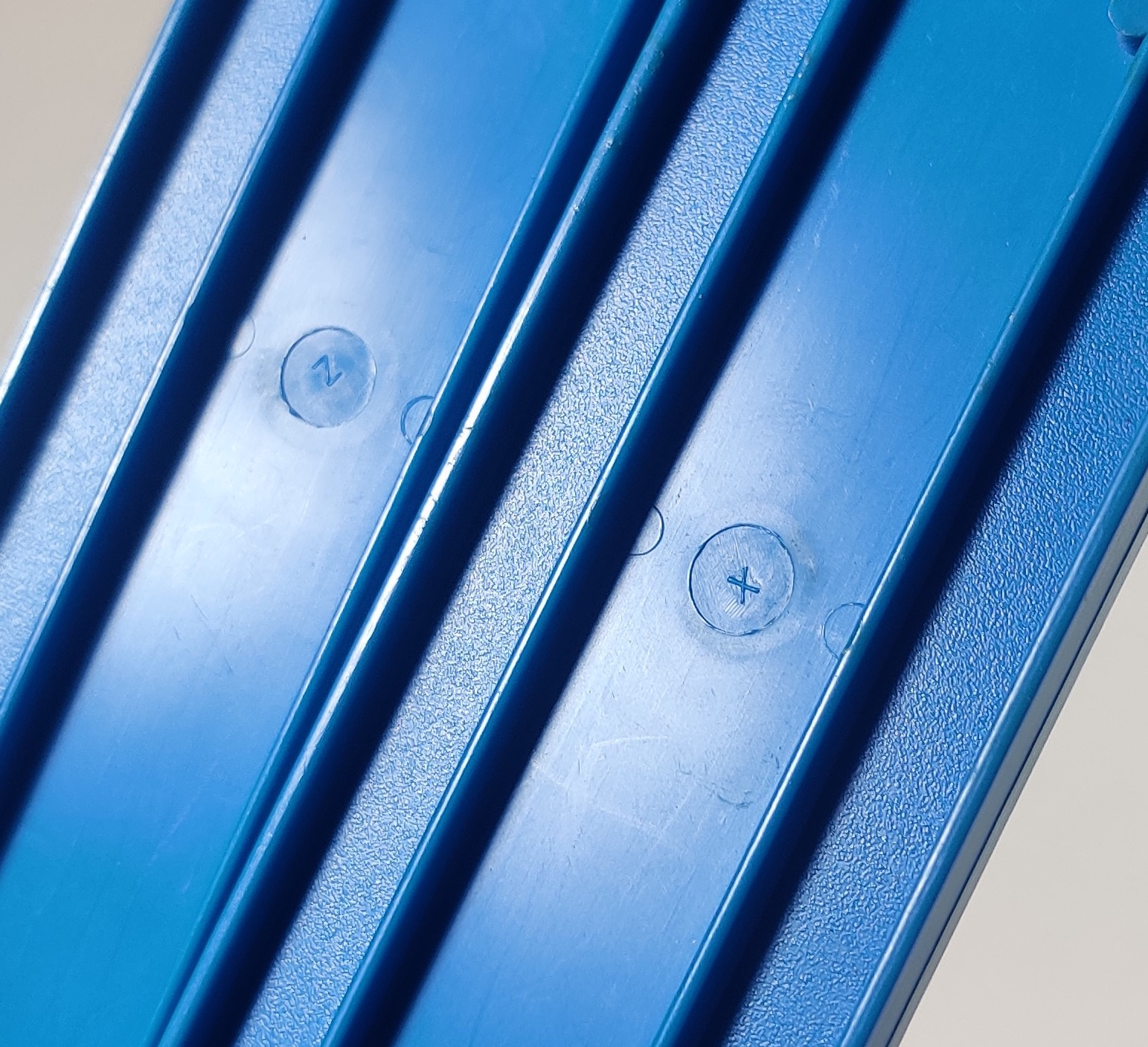
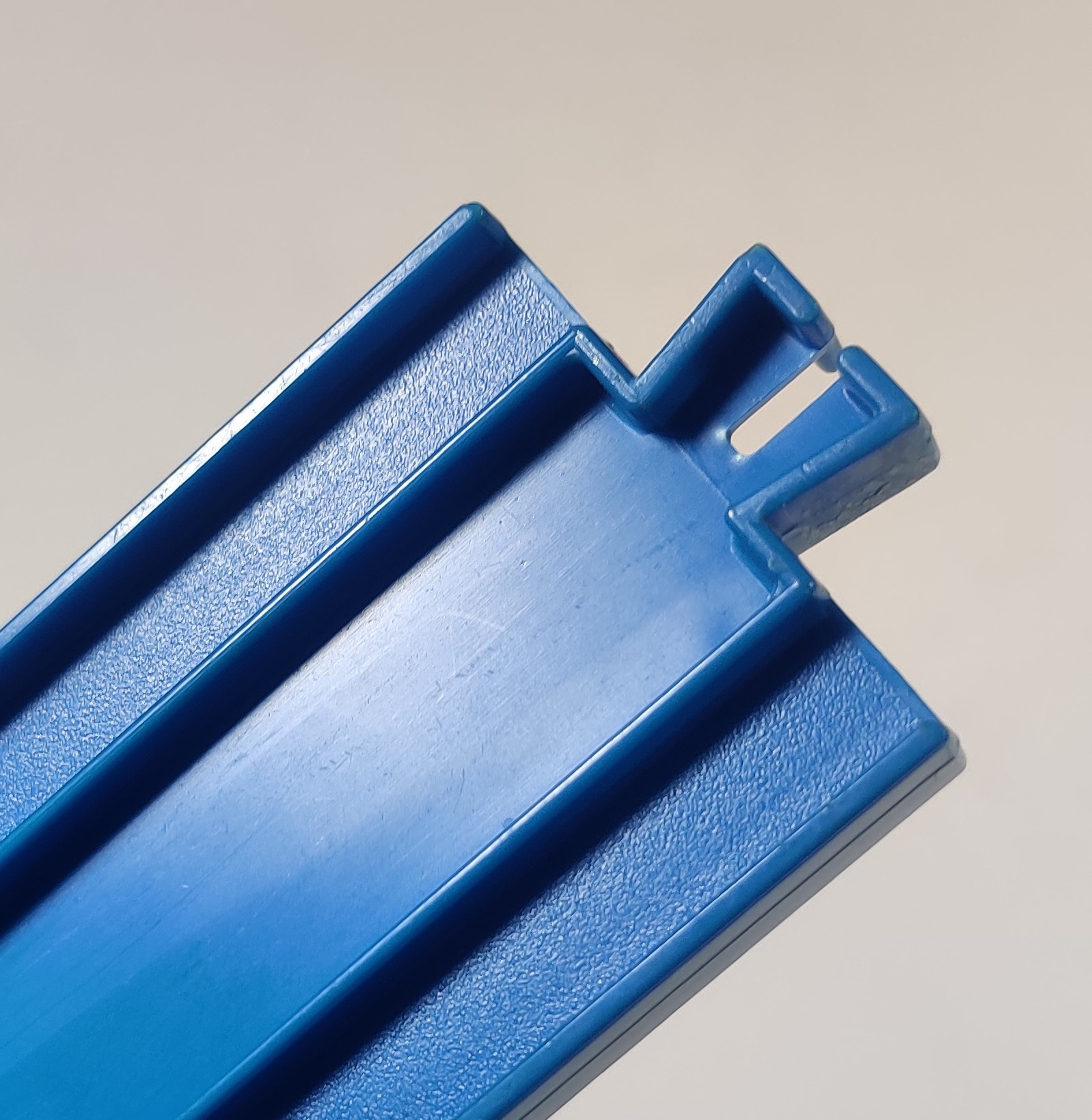
The track in this set is somewhat odd. The 90 Degree Curve Rail first appeared in Plarail sets around 1974 and were apparently made of a harder plastic mix, as are the ones in this set. They have "A" and "B" molding marks. The straight rails are also a harder mix, and the box states that these track components were actually produced in the USA, which is the only instance I know of of Plarail-style rails being produced in the United States by Tomy (the standard Plarail is adapted from was itself developed in America, but not by Tomy). The track would certainly not survive anywhere near the amount of bend that you can put into a modern Plarail and would definitely snap if bent too far out of shape. The roughtop tread on these rails seems to be somewhat "muted" versus later roughtop rails, with 1975 being fairly early after most rails began having roughtop tread in 1974. The turnout rails are the closest to normal Plarail, and have molding markings matching turnouts of the era and were apparently still produced in Japan like the train and other components.
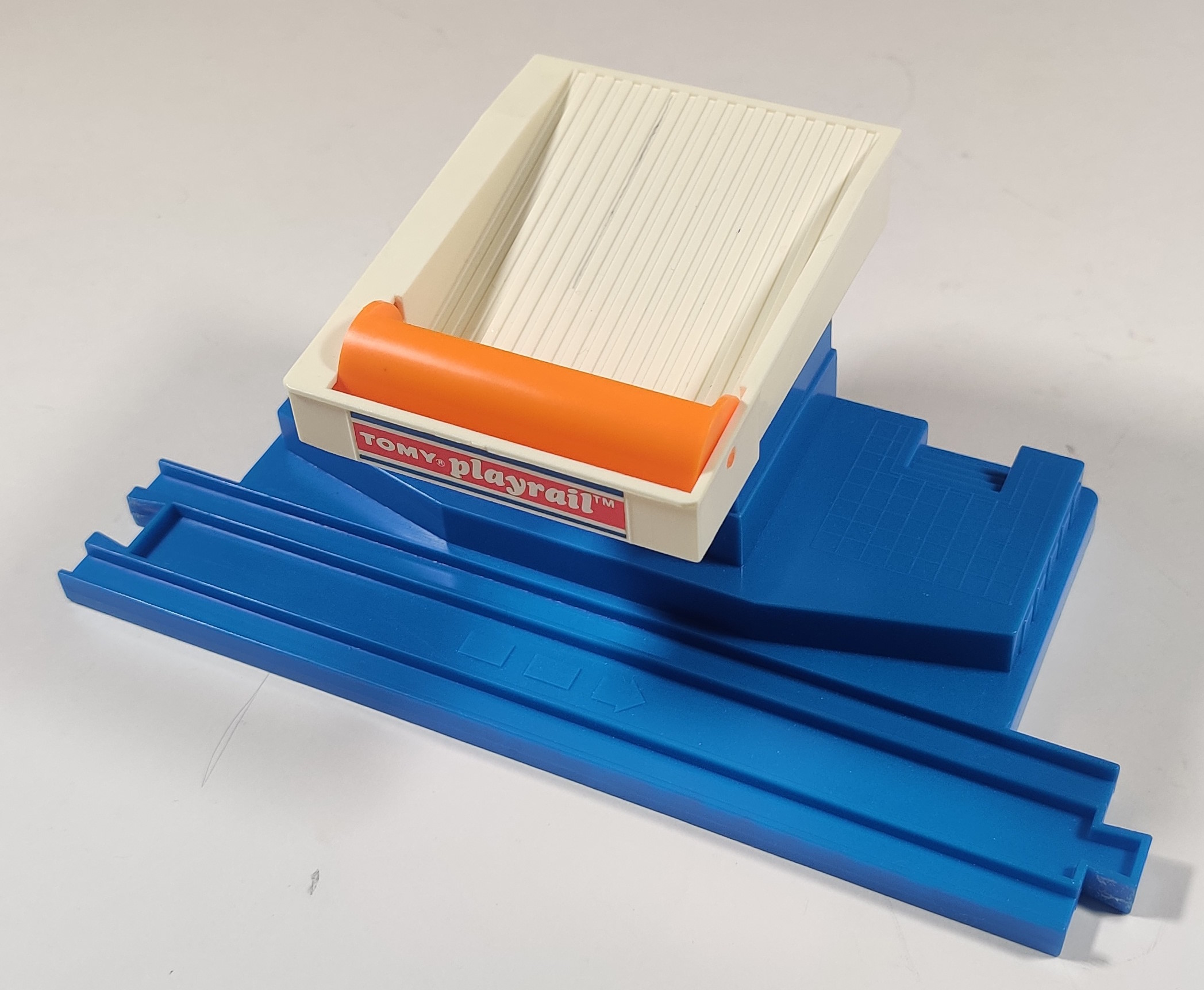
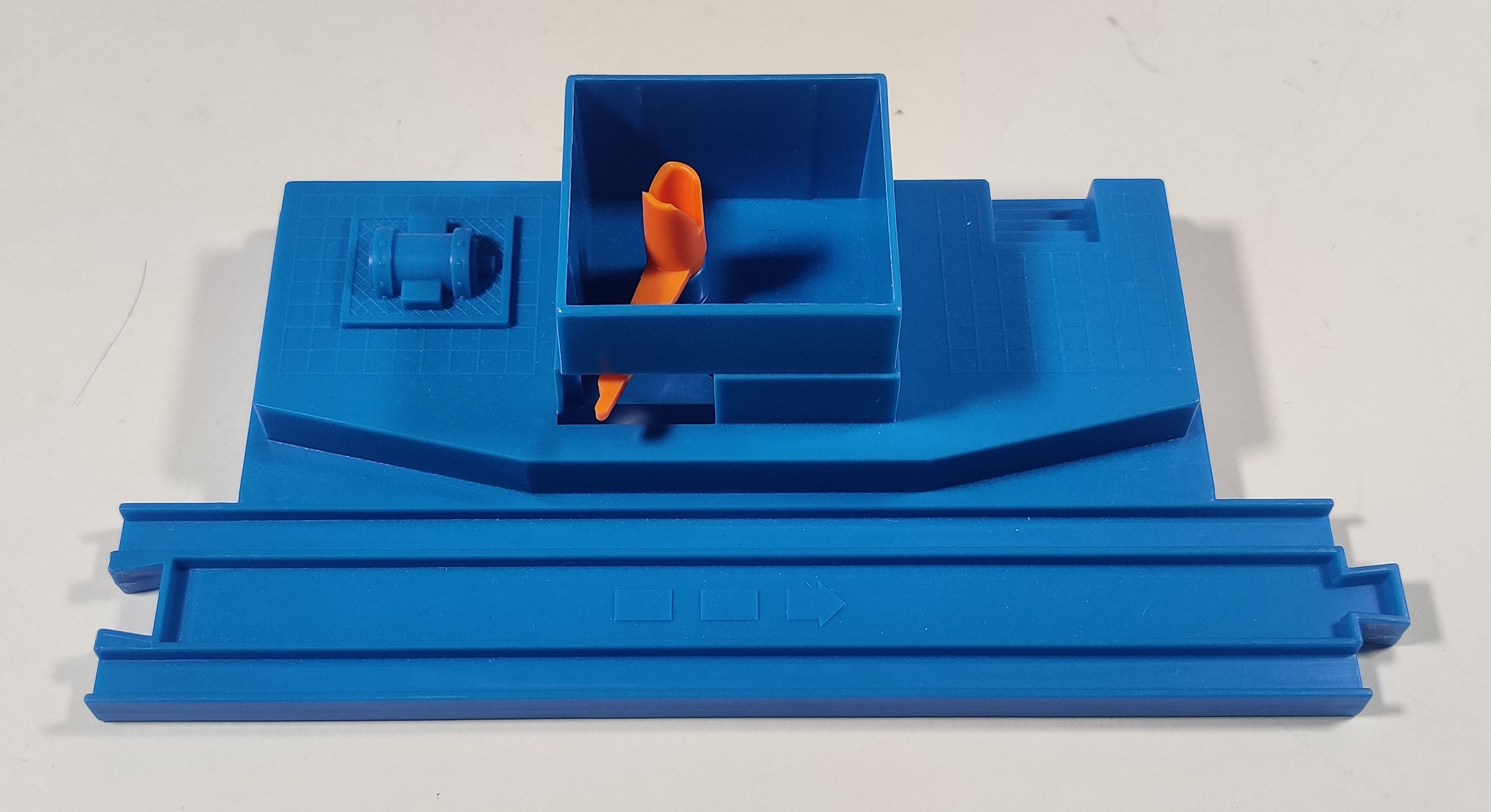
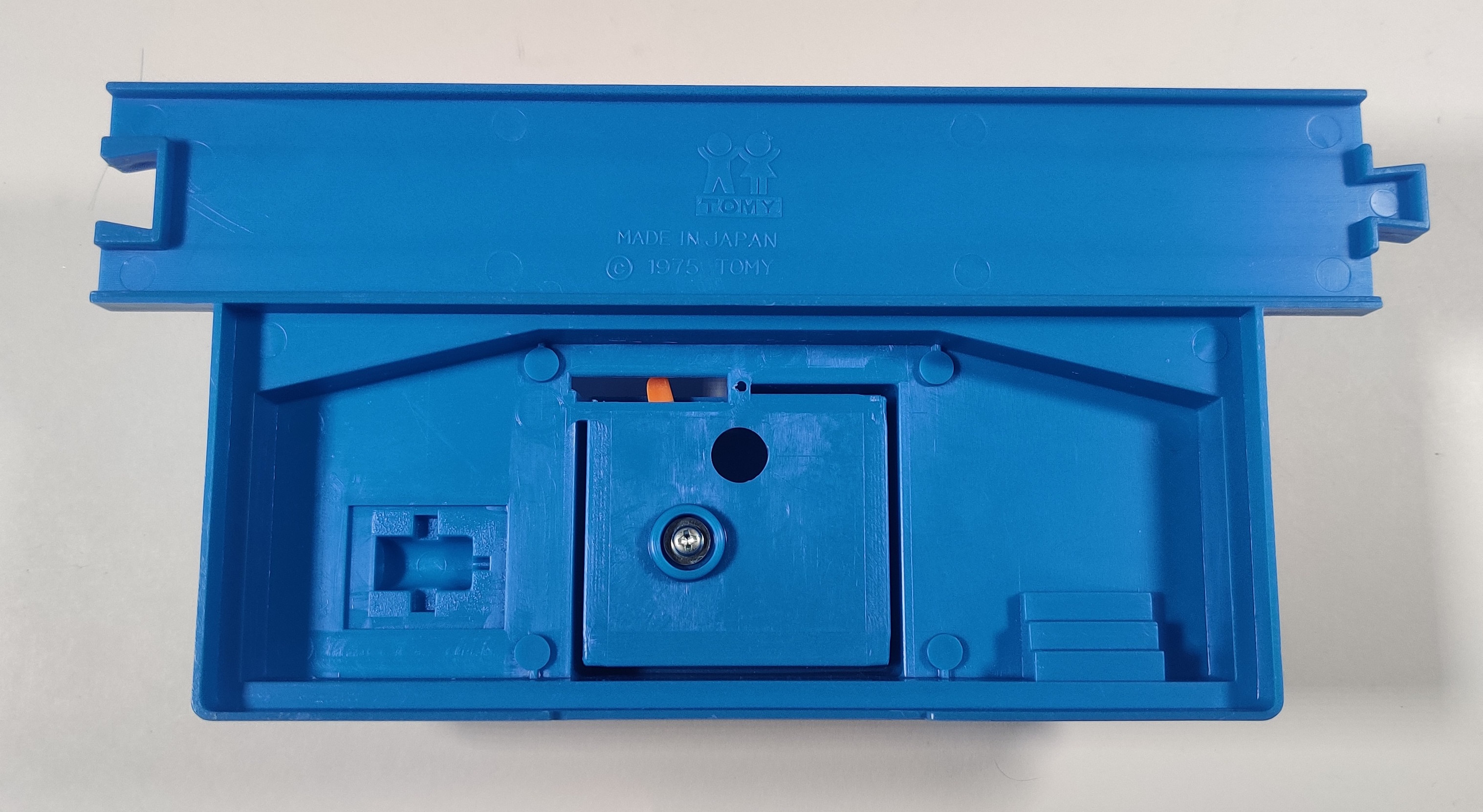
The log loader is the same style used in the handful of Plarail sets that used this gimmick. The log car has a protruding catch that hits the orange lever in the loader base which shifts the log dispenser back to release a log into the passing car.
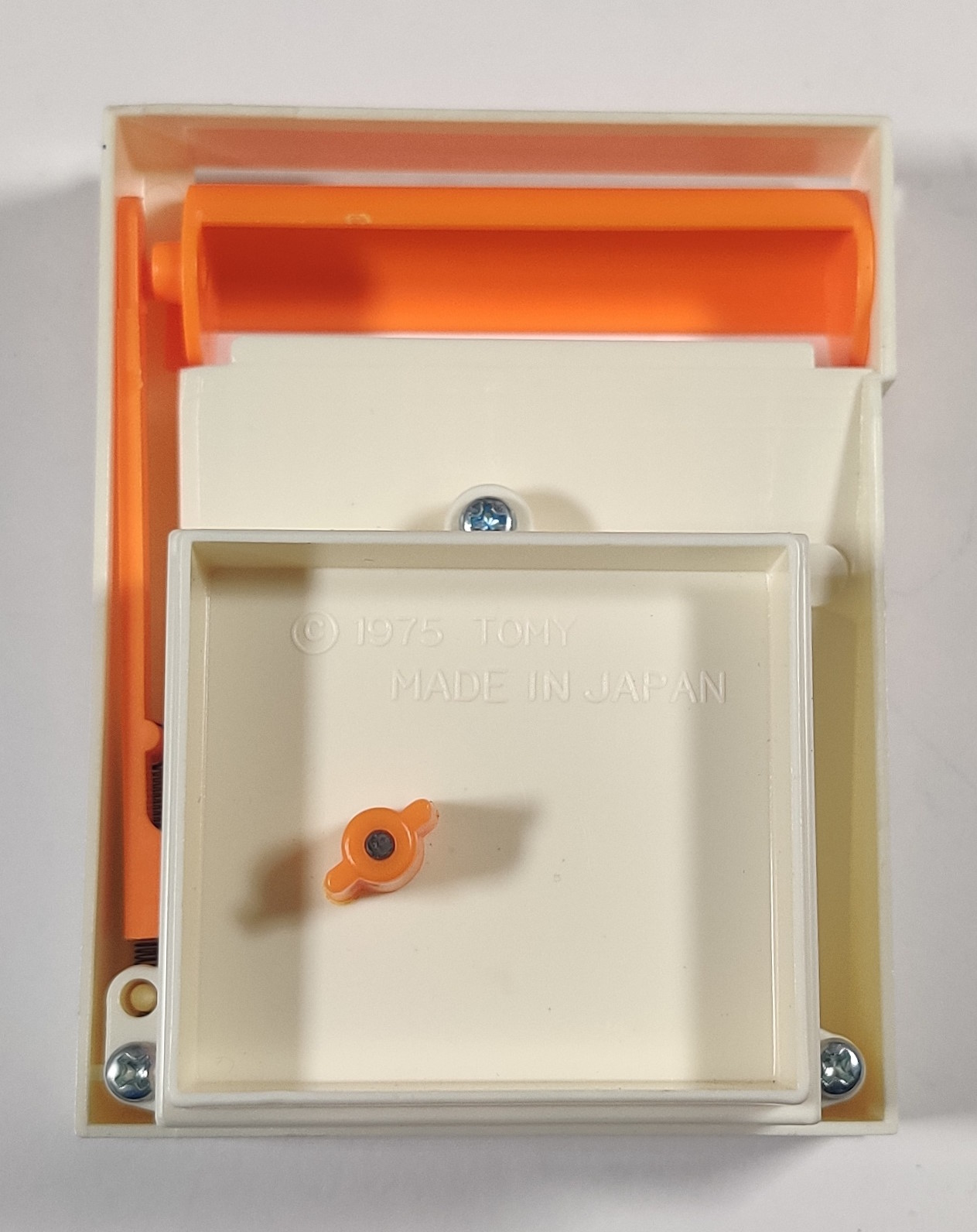
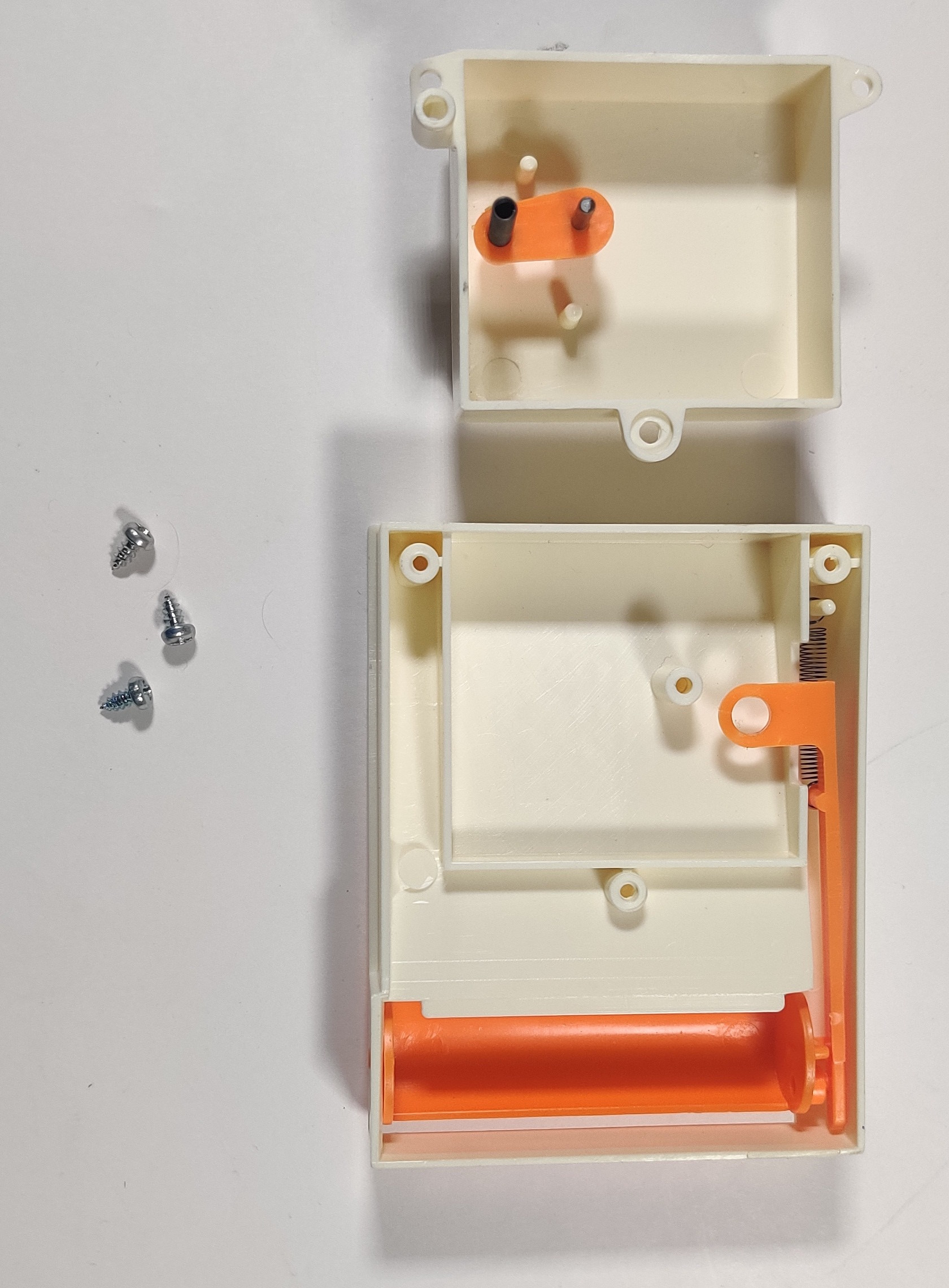
The upper loader has a spring-loaded mechanism that releases one log at a time.
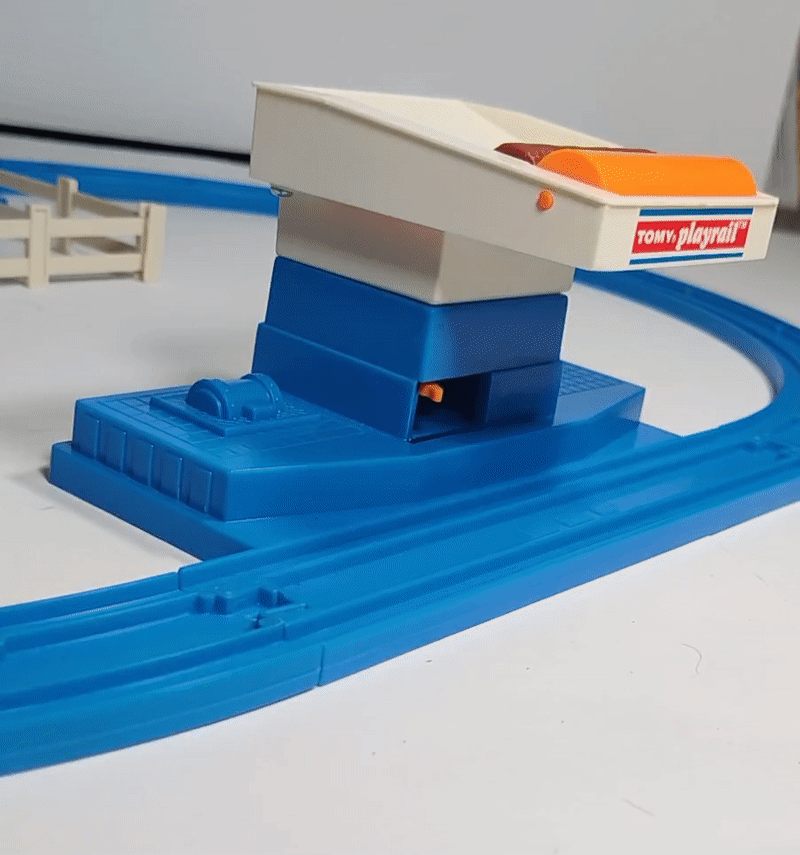
25% speed
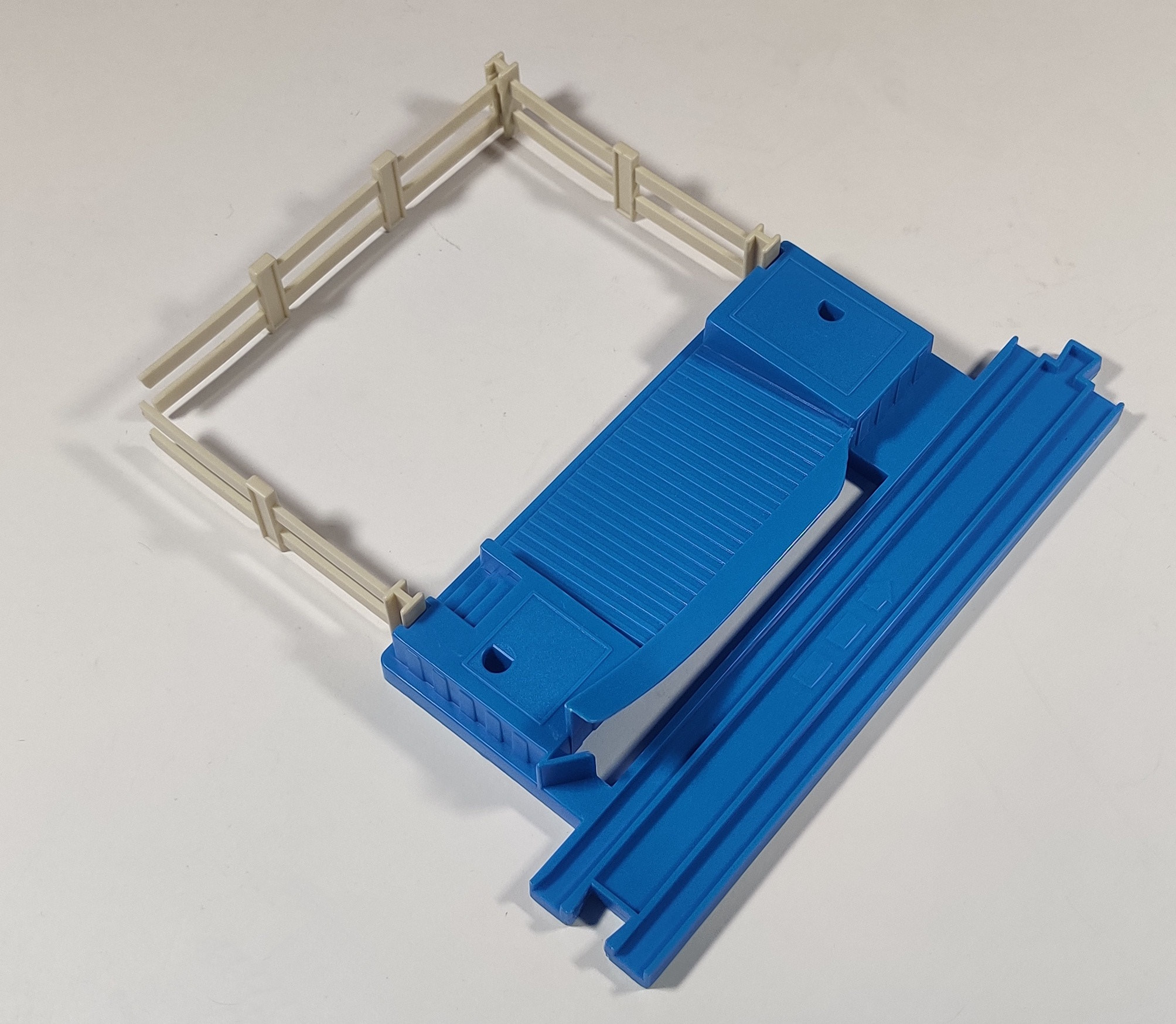
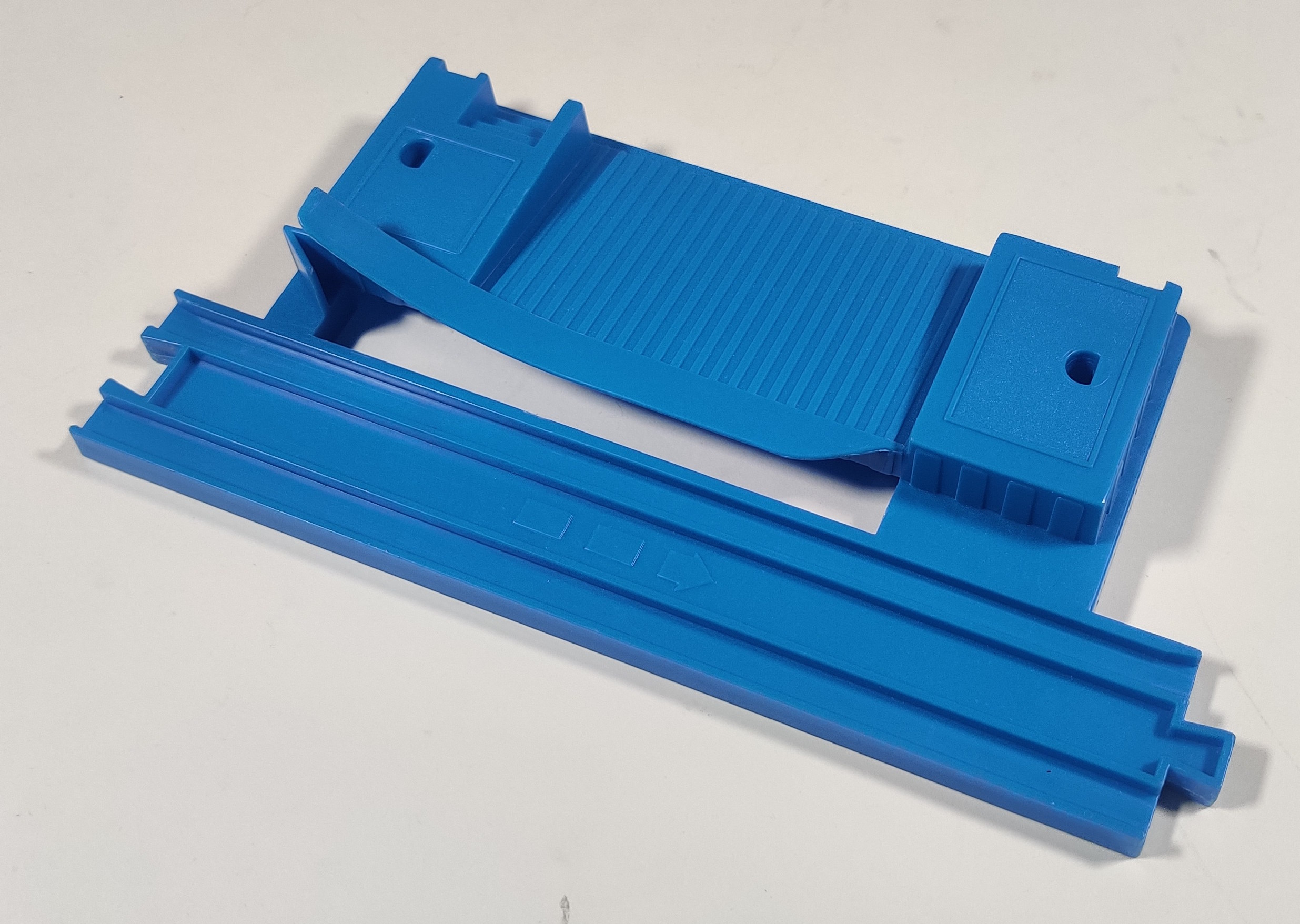
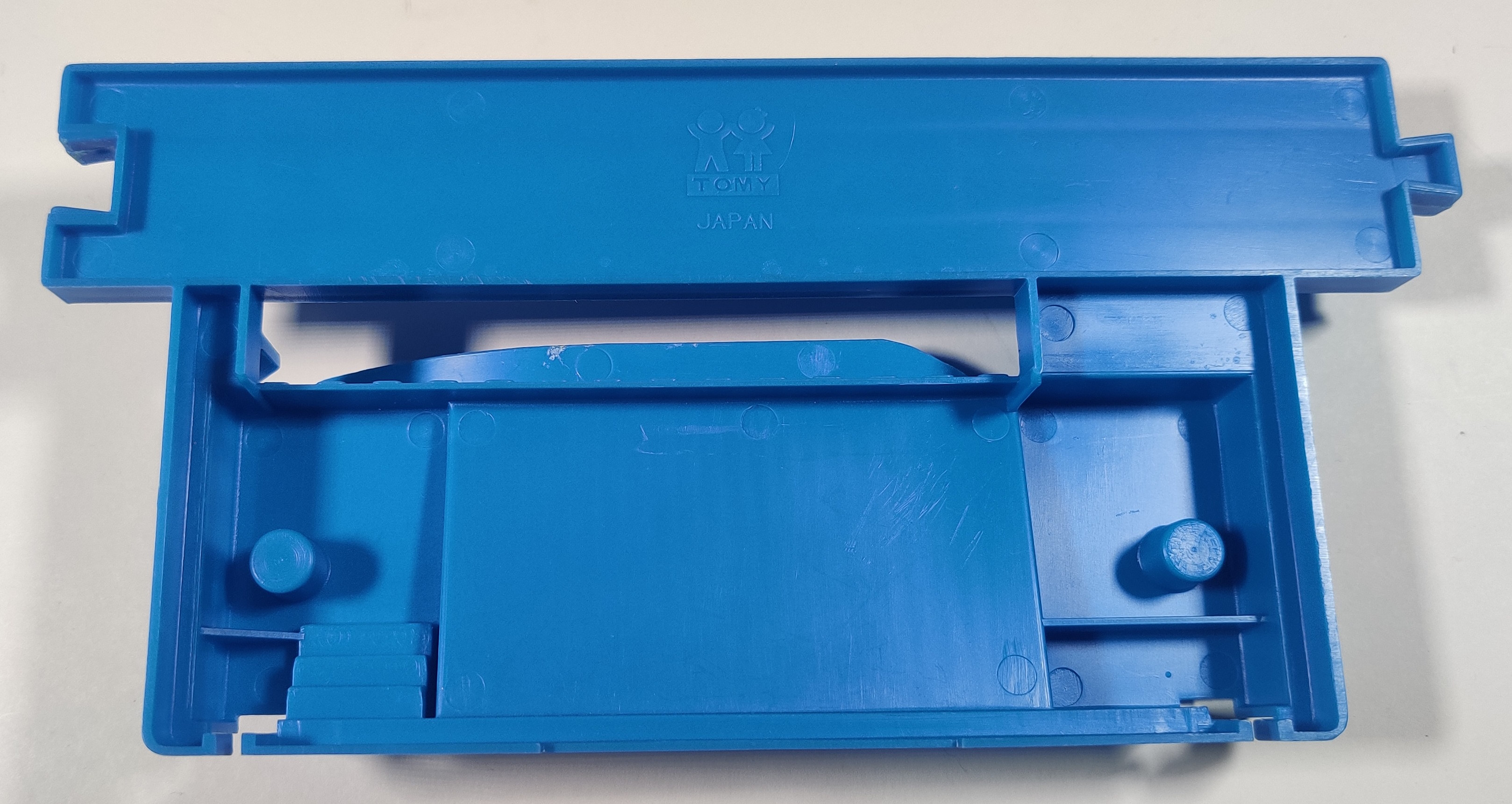
The base of the dumper and corral has a curved lip that engages with the log car tipper and tilts it over. The molding for the base still includes molding features for where the roof over the dropoff was installed on some other releases of this accessory.
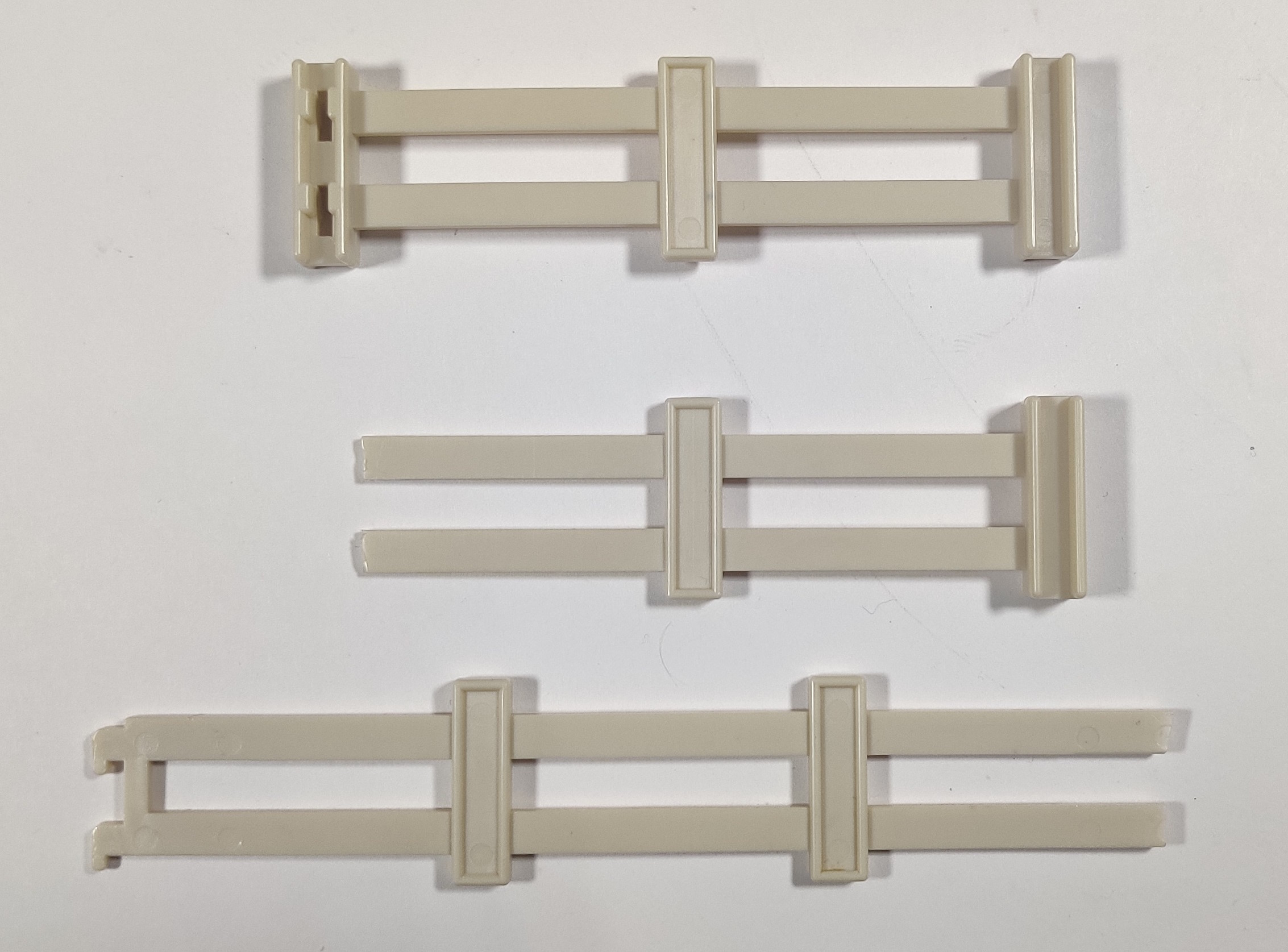
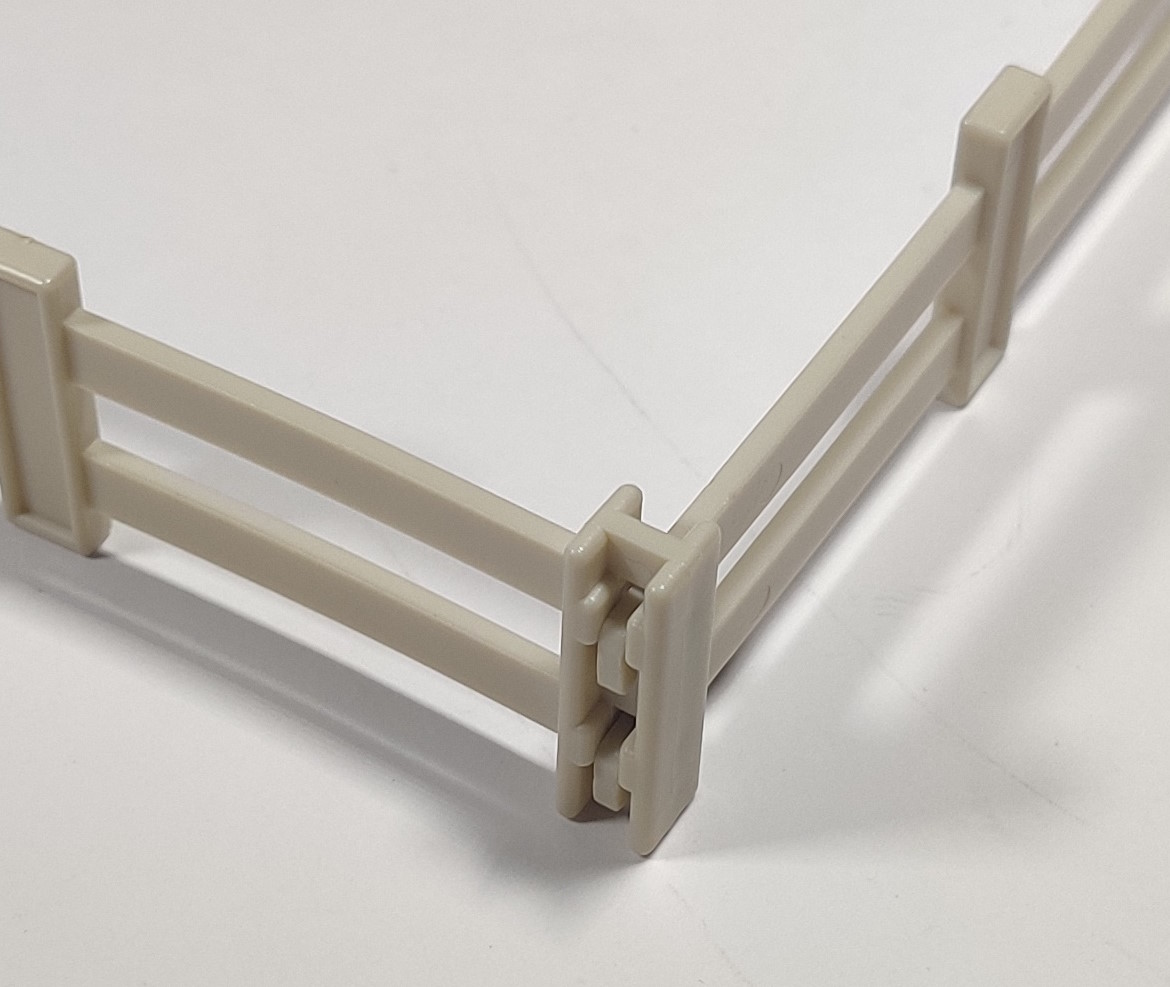
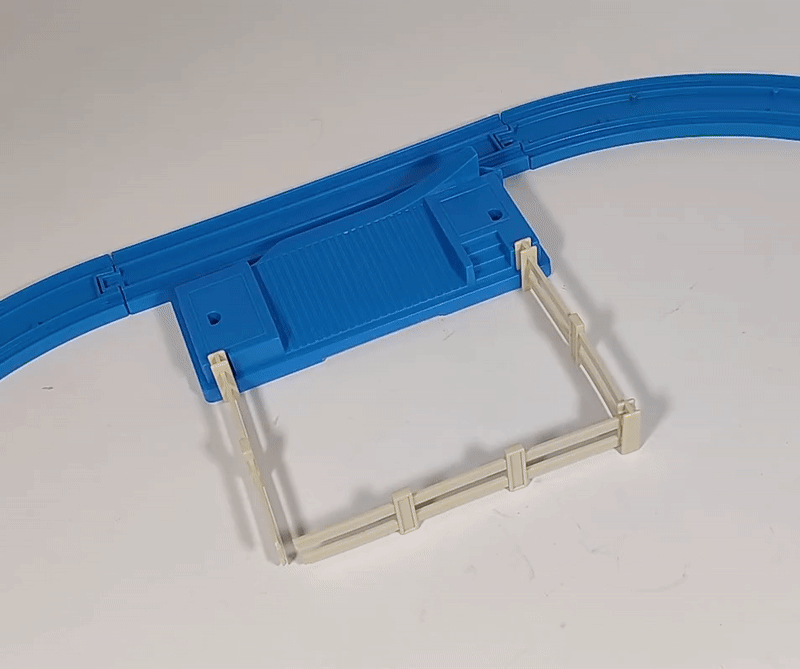
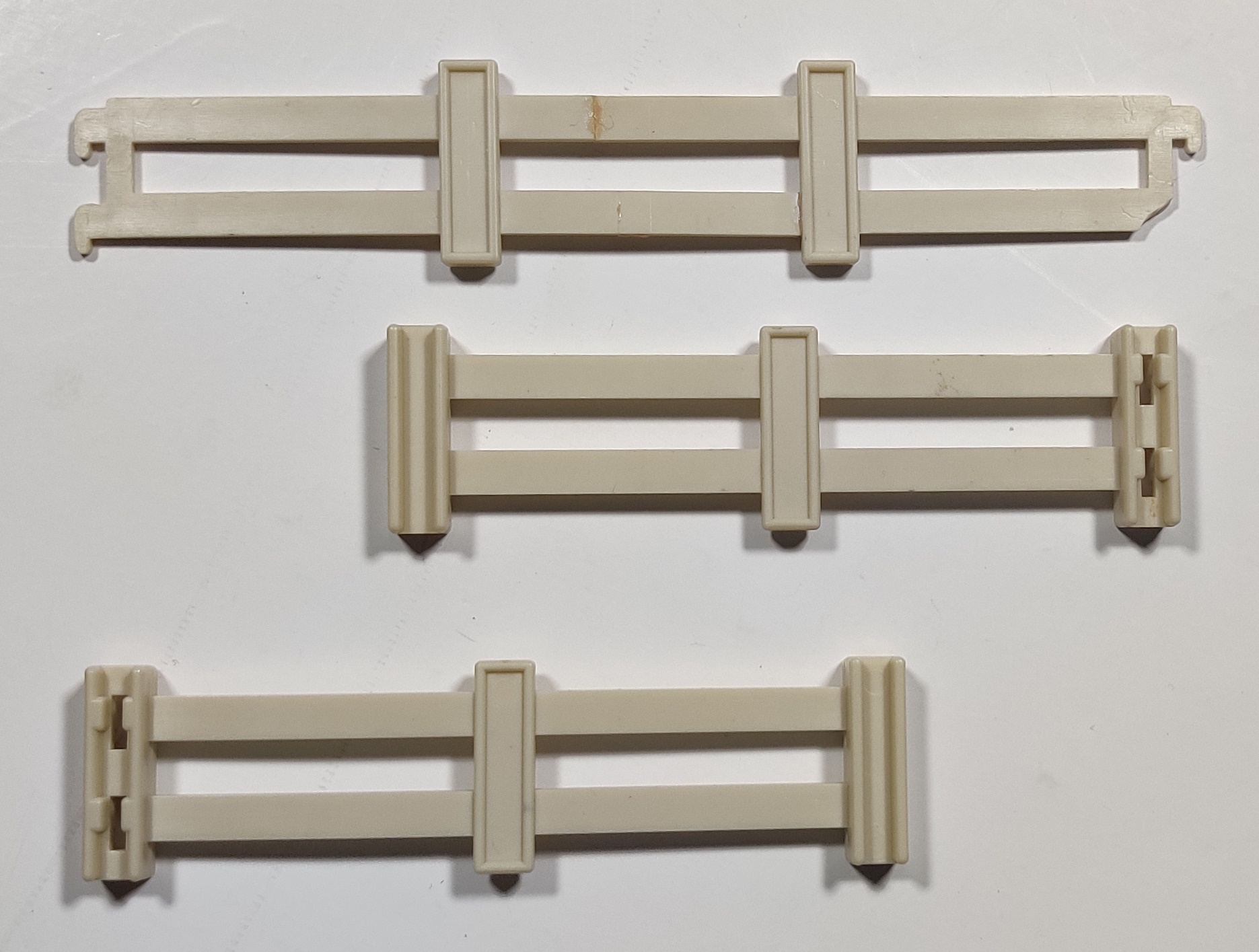
A three-piece fence holds tipped logs in. One of the side pieces as well as the rear piece of the fence in my set are missing the connecting joint. The rear section slots down into the side pieces which sit inside the base. The second set I found has a more complete although still partially cracked fence. Apparently, these fence pieces were also manufactured in the USA.
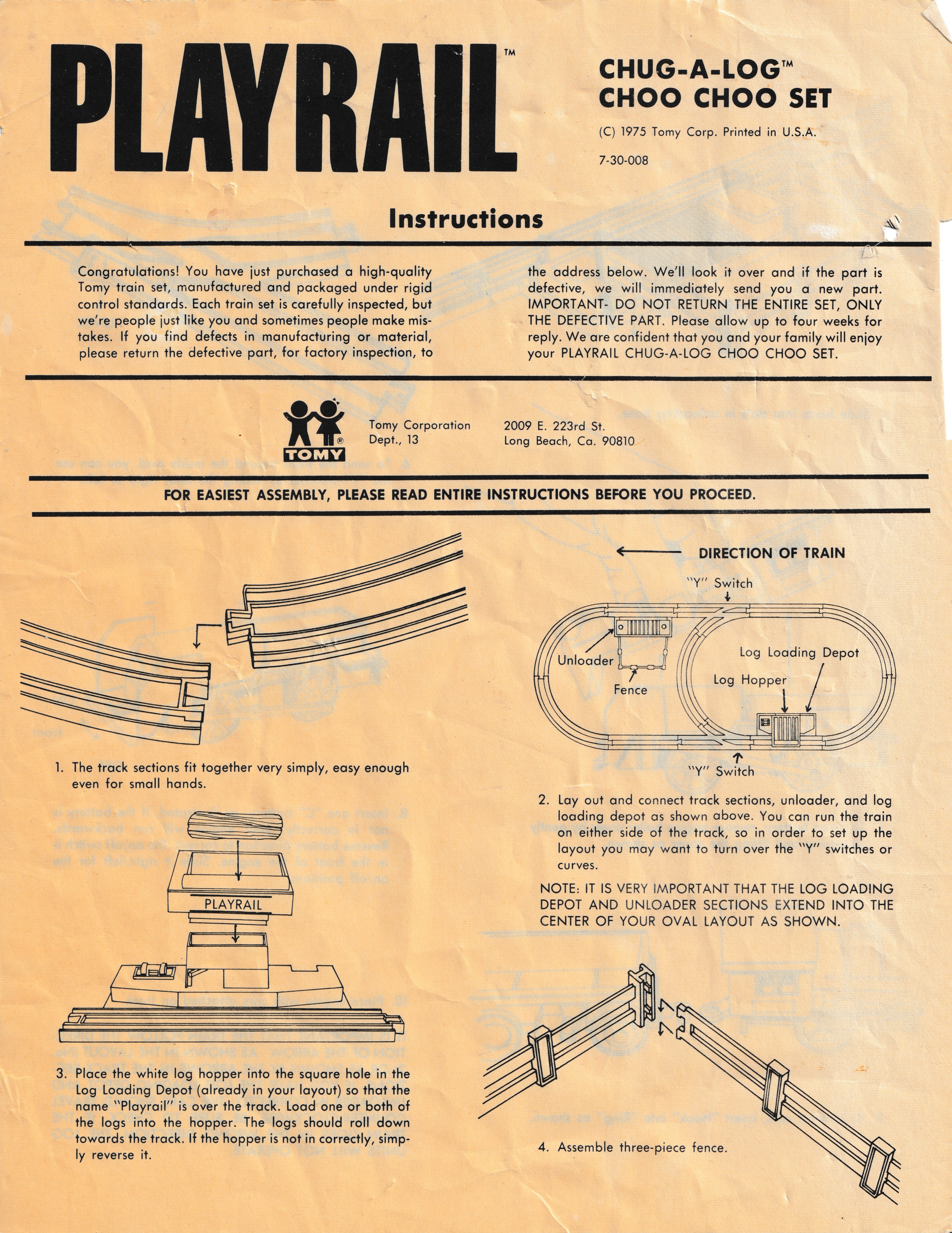
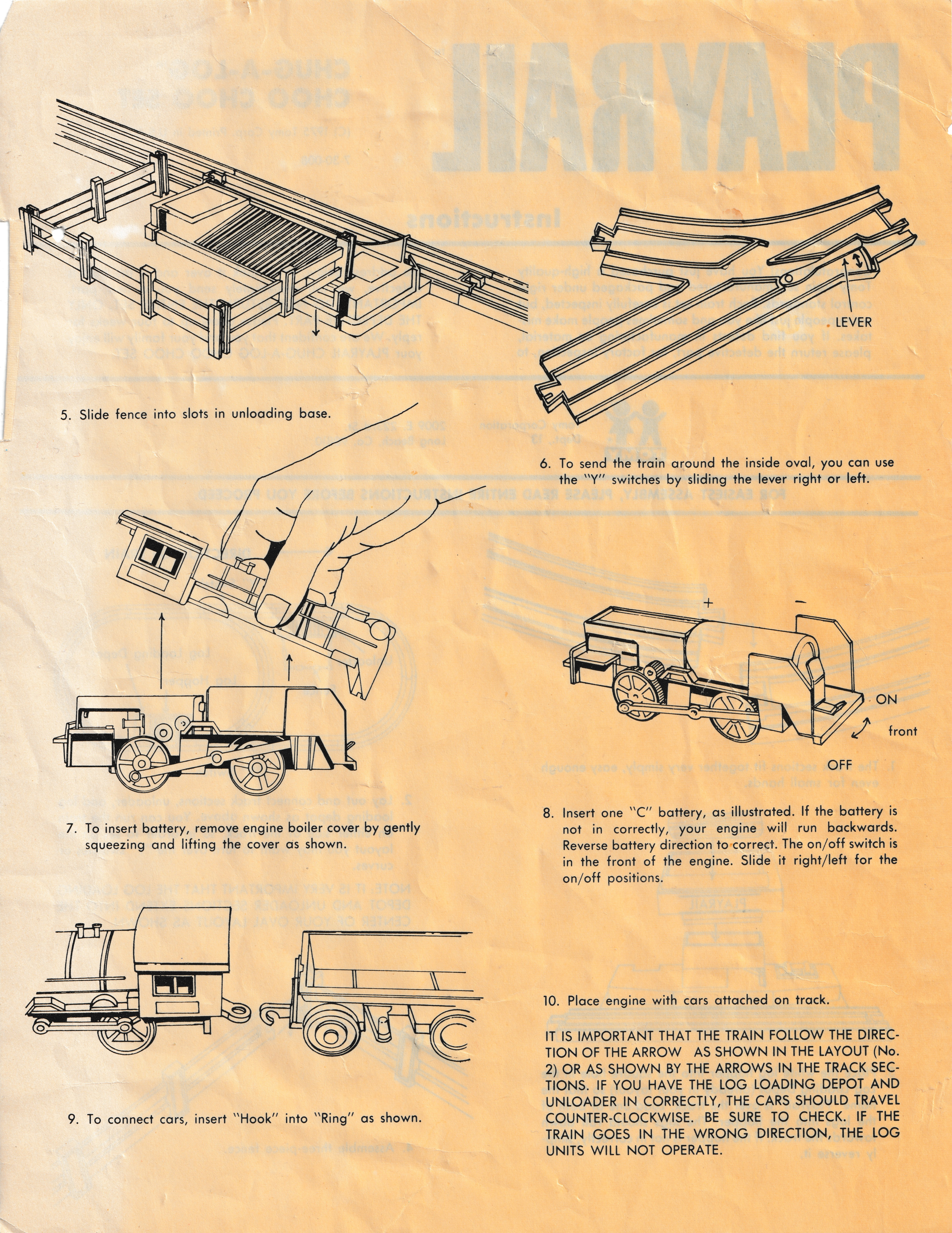
The second copy of the set that I found had the instruction sheet. Being the first time that Plarail was exported directly outside of Japan, it is interesting to see what Tomy says about the system and I like how it is illustrated here.

The log loader and unloader together create a cycle where the train picks up and drops off the log loads, as shown here on the smaller rectangular layout shown on the cover of the box. Two logs seems a little too few to make this fun for more than a few laps, I think one or two additional logs would make the set more fun.
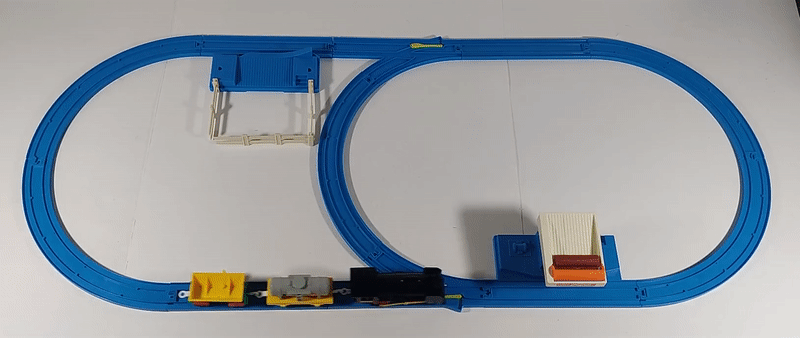
The larger oval with passing loop layout is more interesting and the train can be diverted from its normal path. As set up here if the train ran around the smaller oval it would overload the log car, so setting the passing loop to skip the loader and revisit the dump makes more sense.

This is certainly the coolest and most interesting Playrail set to me. The other Plarail Land "Merry-Go" sets are interesting but are clearly aimed at a younger audience and the gimmicks, while interesting, are not really train related. The Plarail log loader and dumper, on the other hand, is a cool train-related concept that roughly emulates real train operation, and it is pretty cool in operation. I also like the D51 with Tomy sticker as well as the old rolling stock with early toolings.